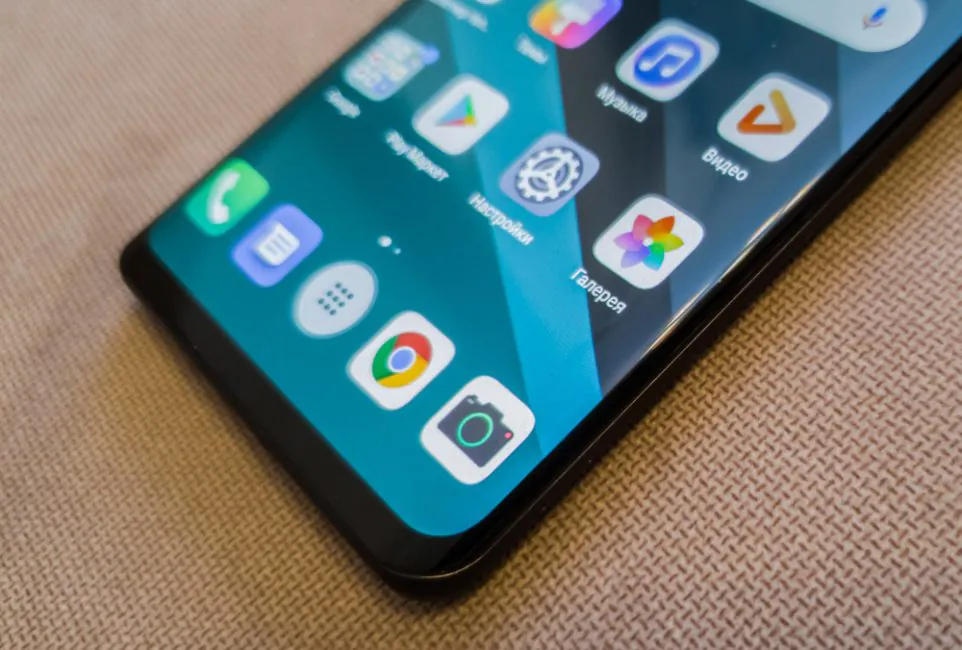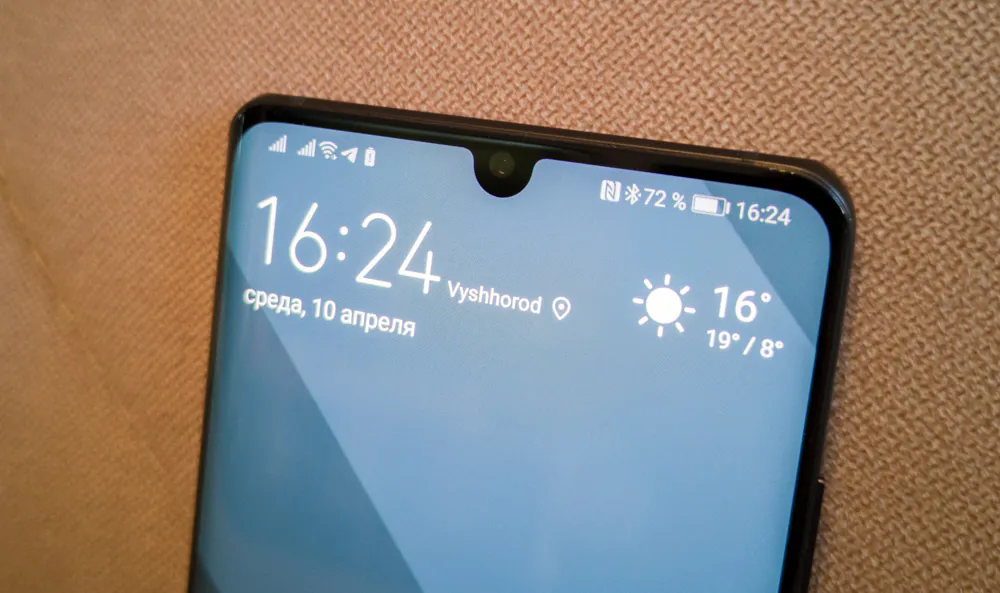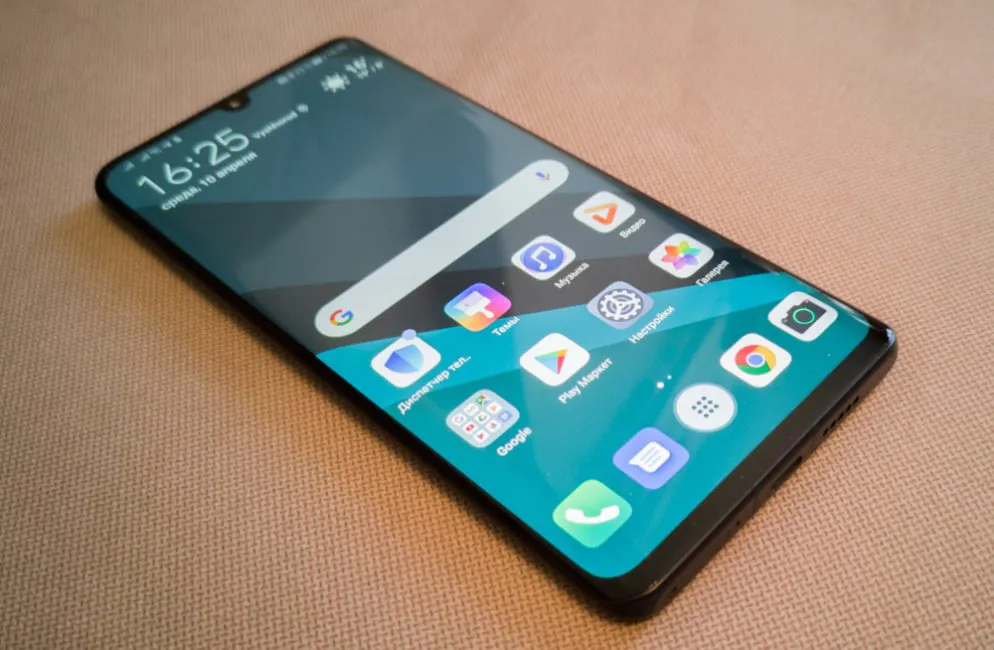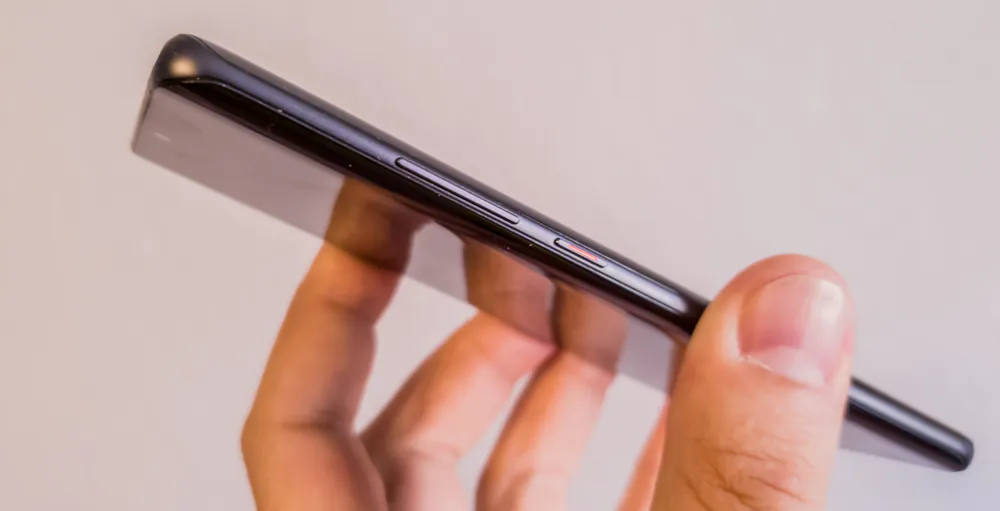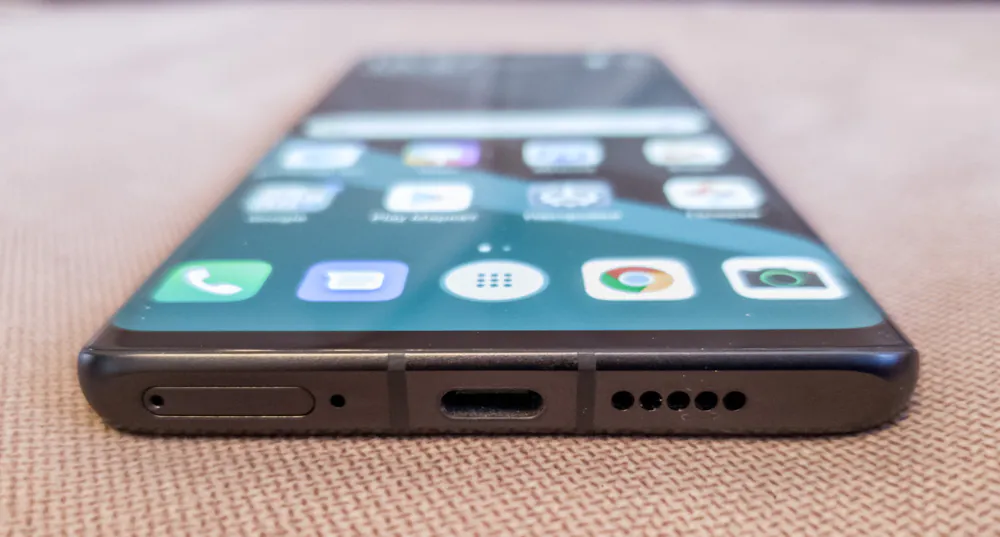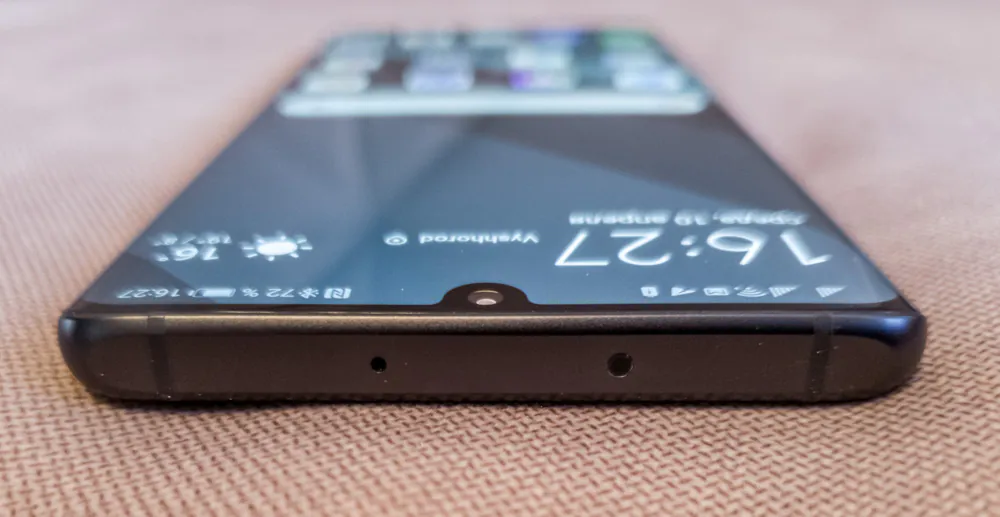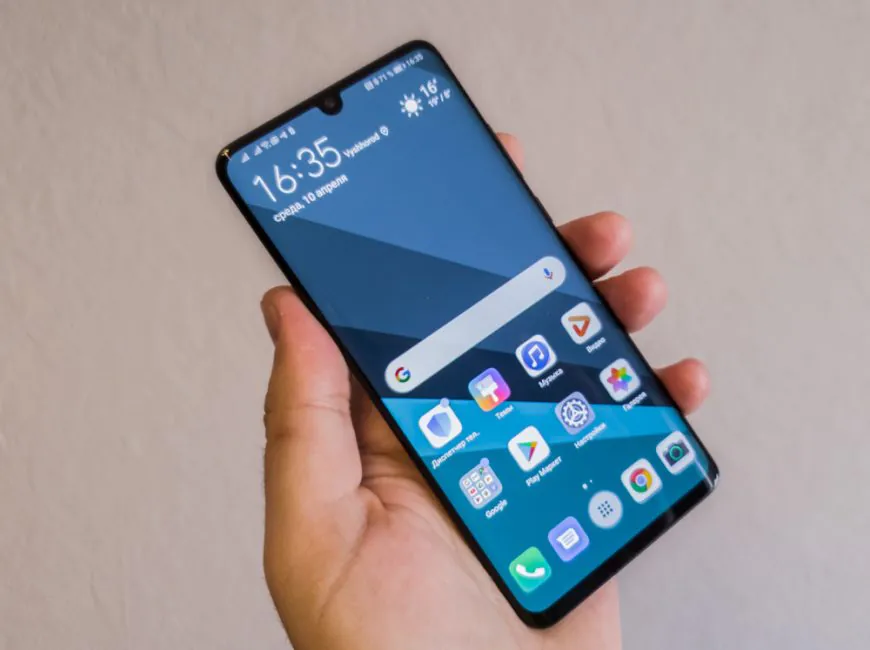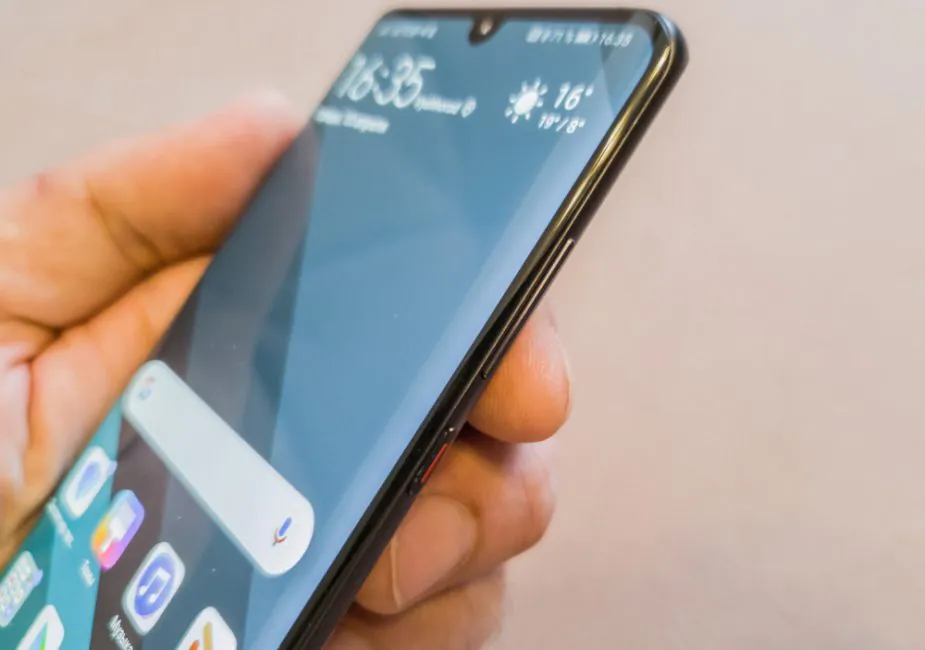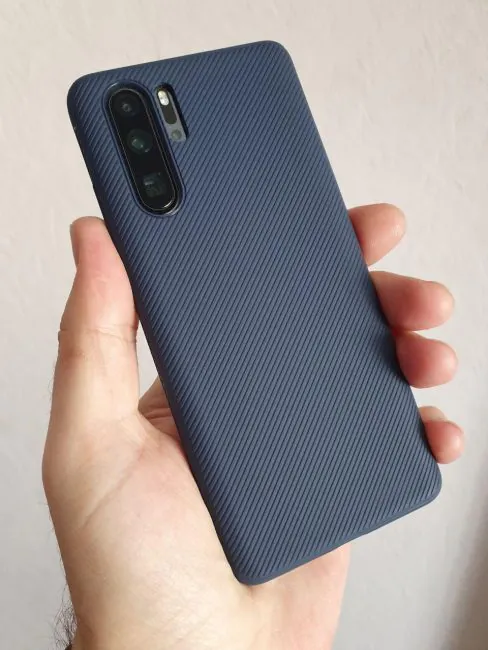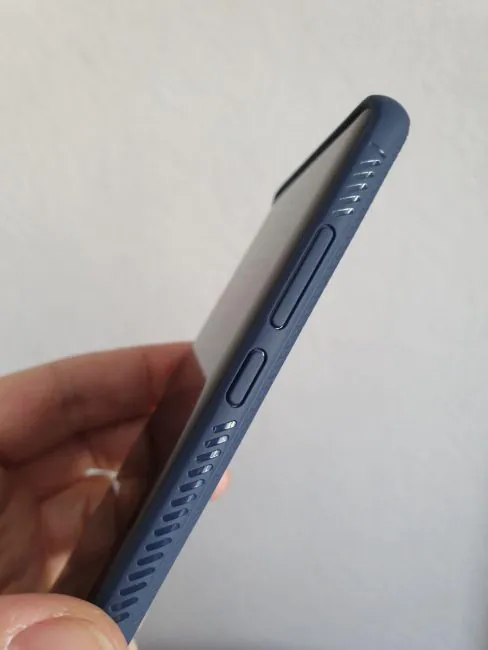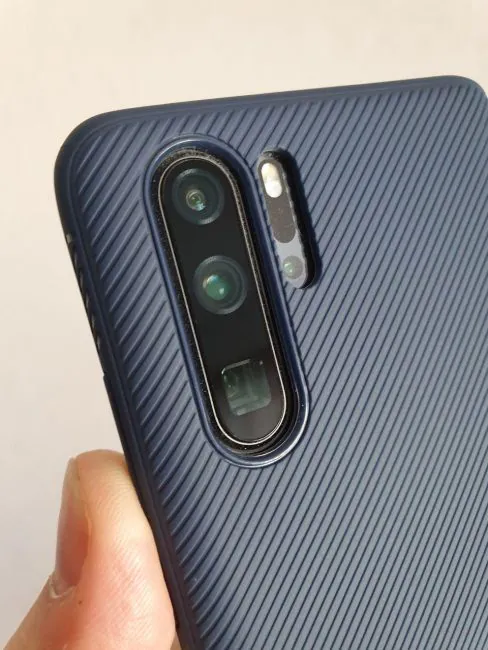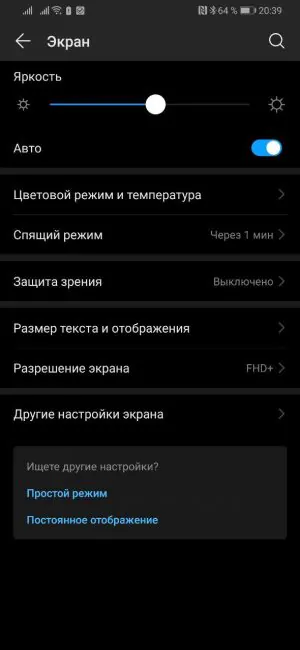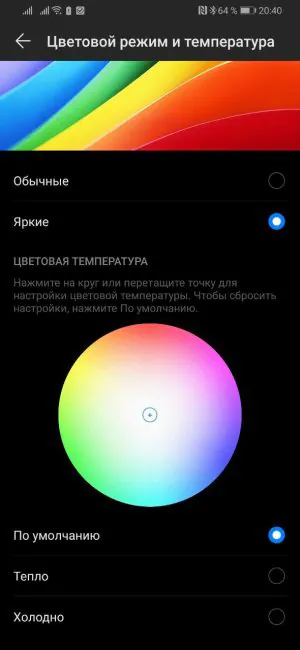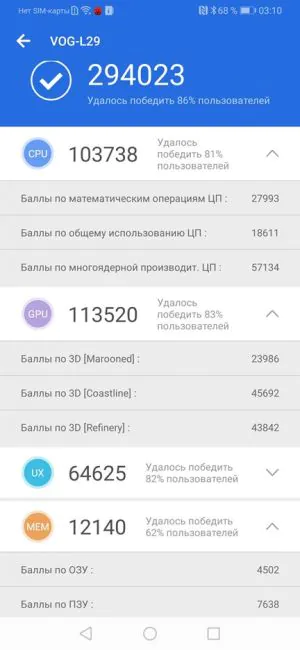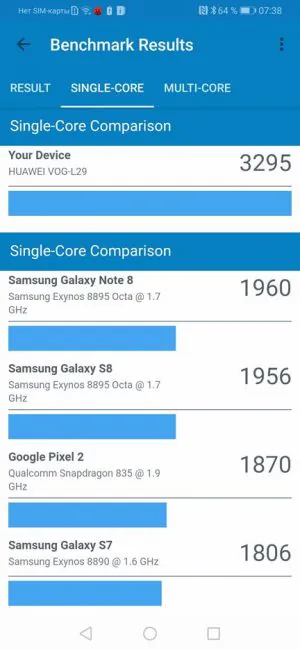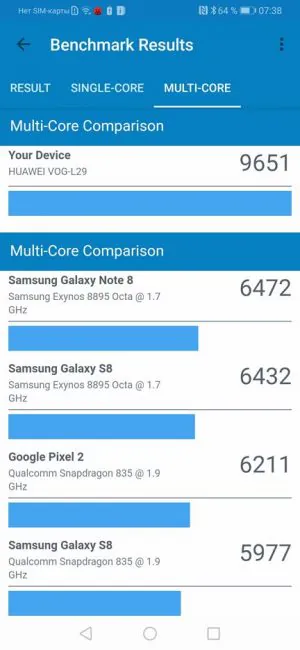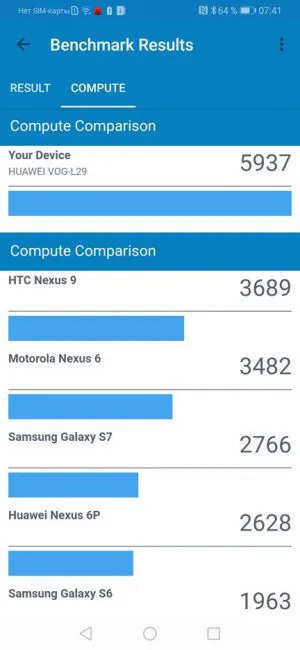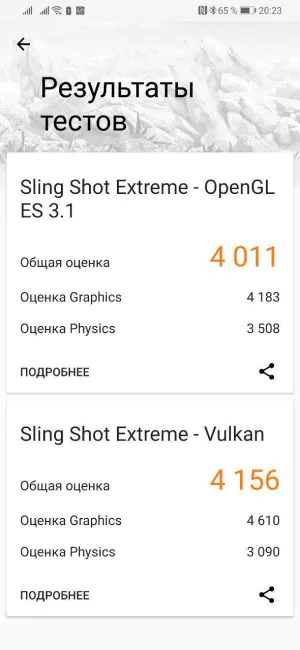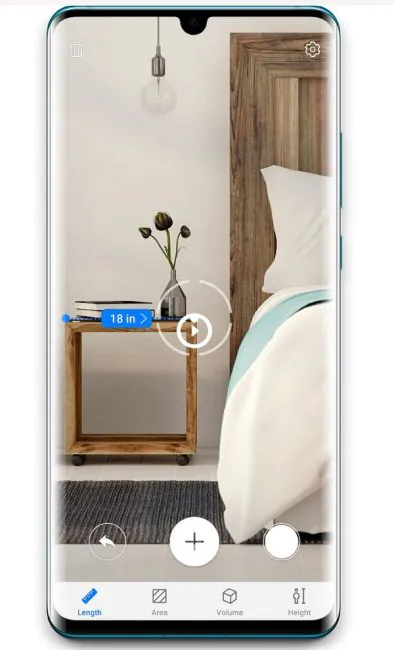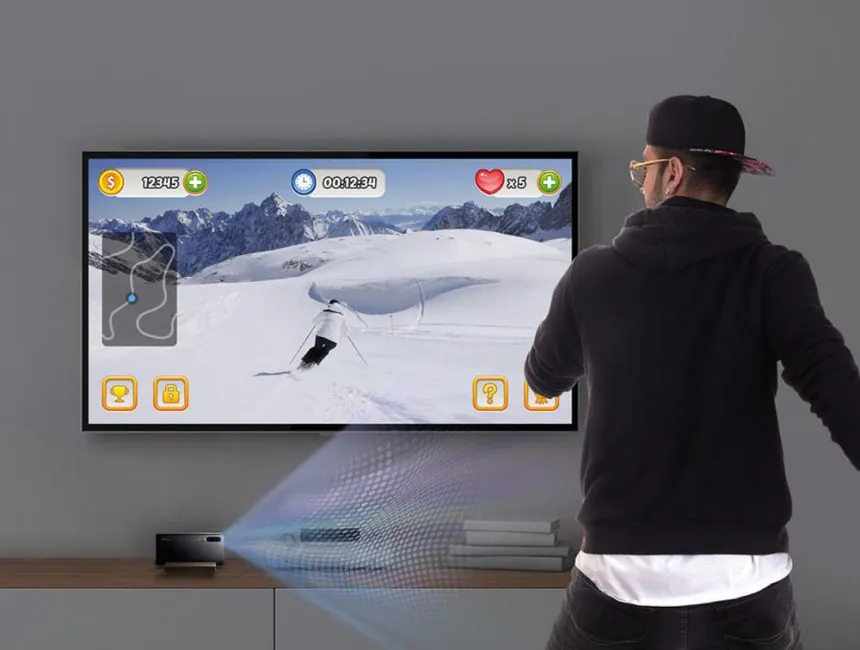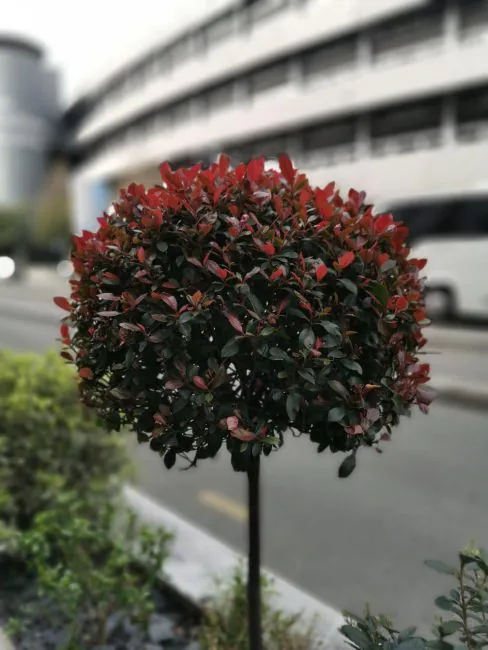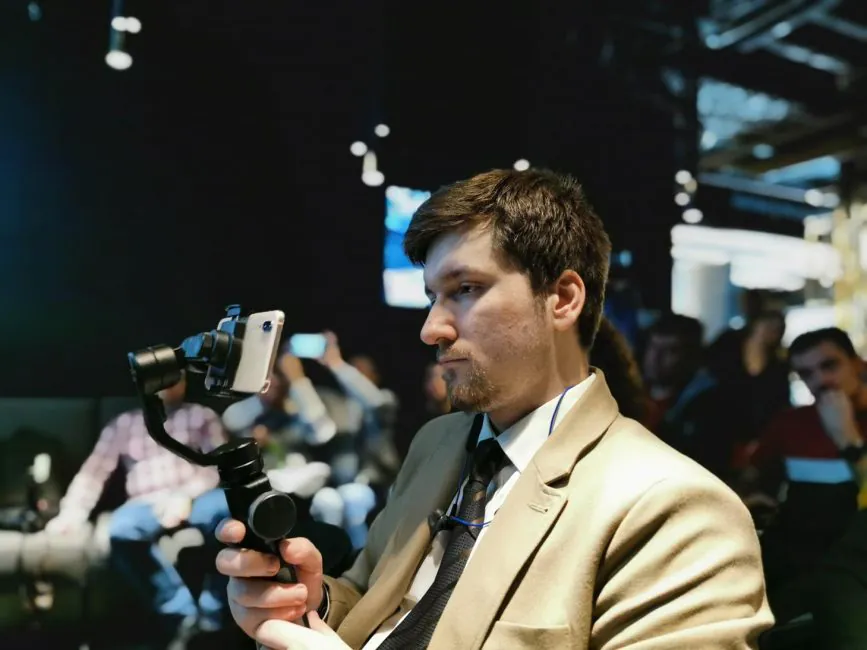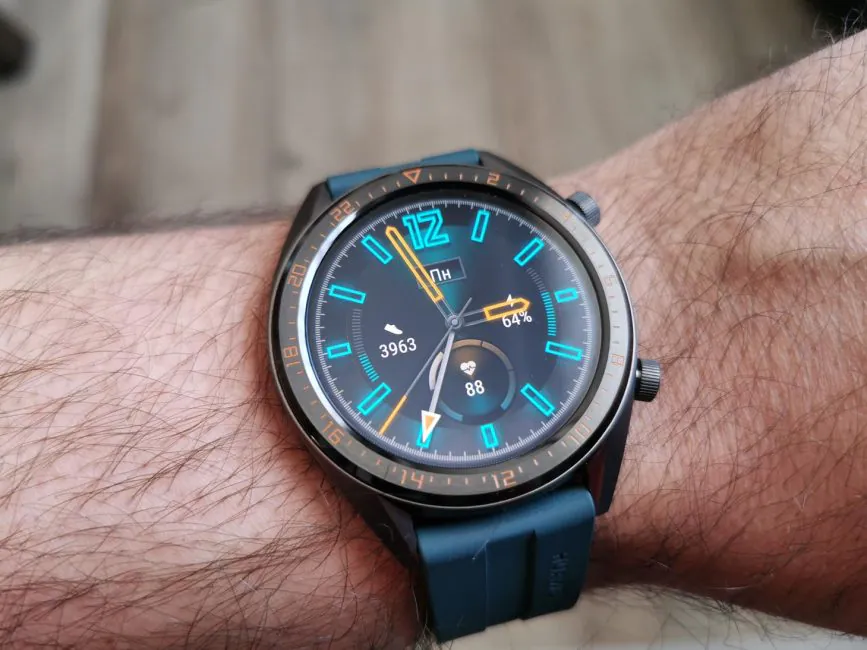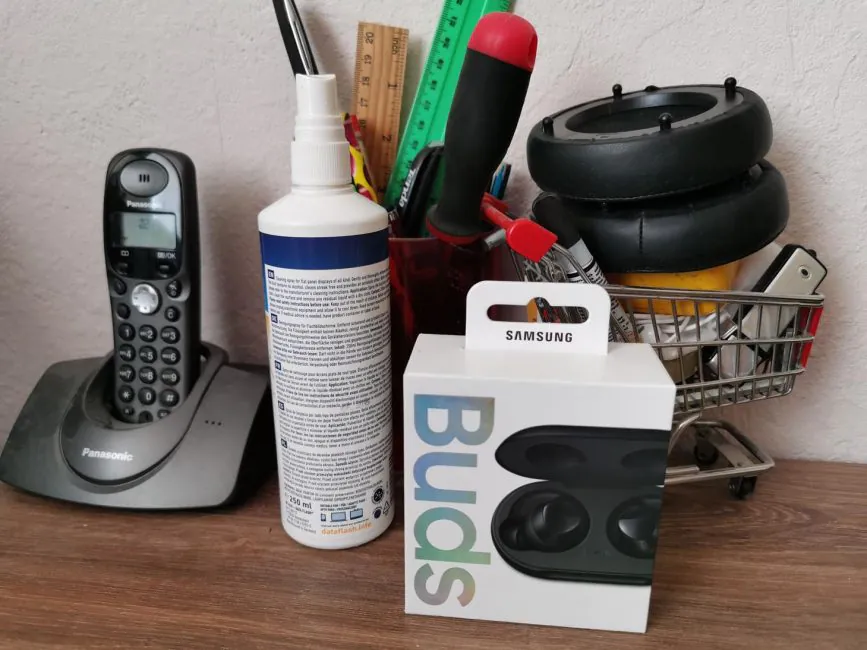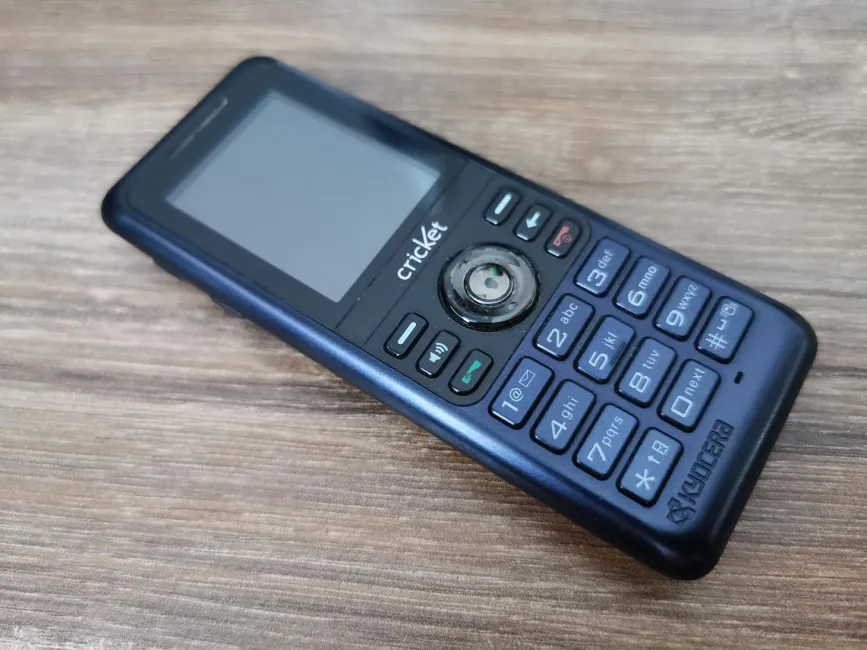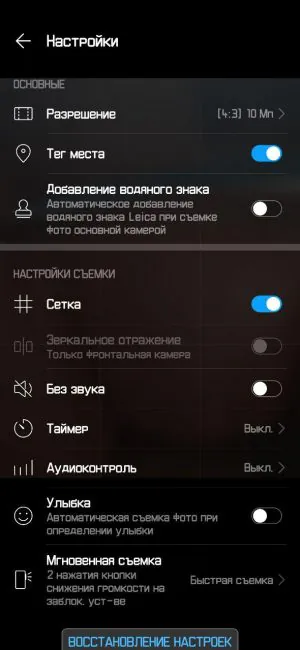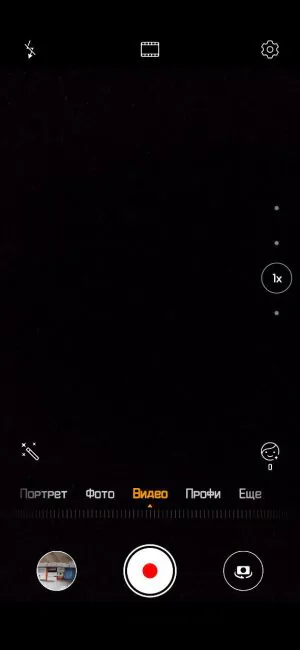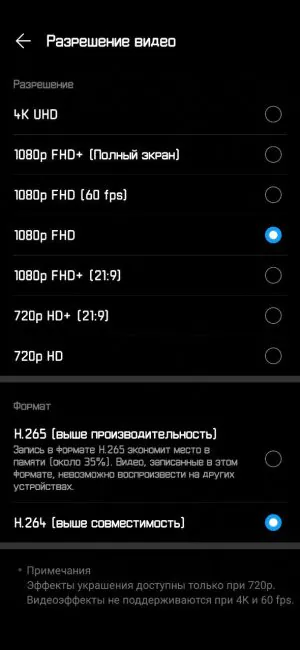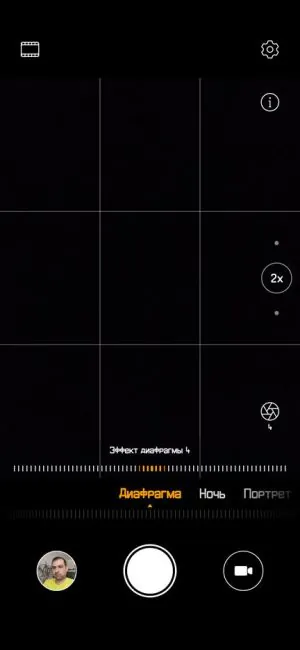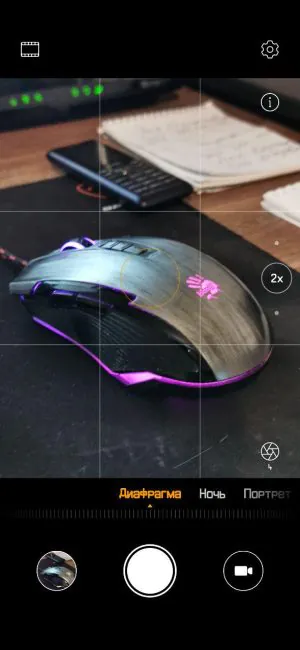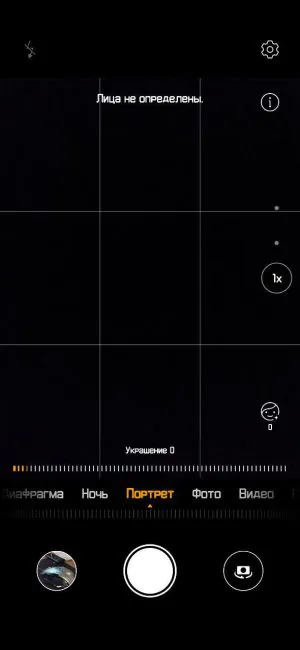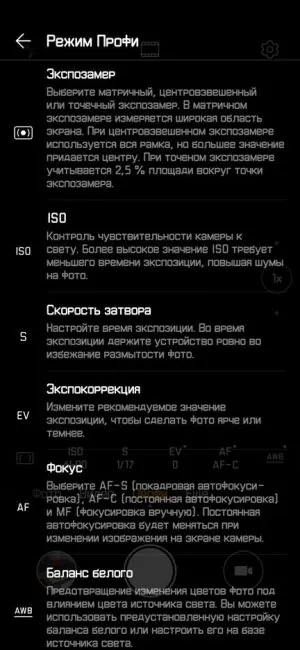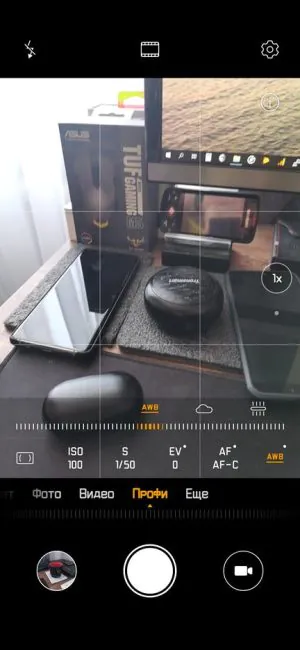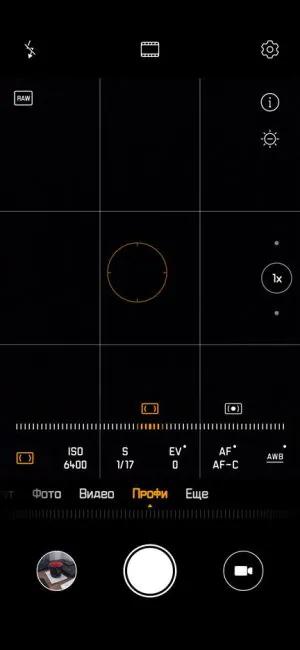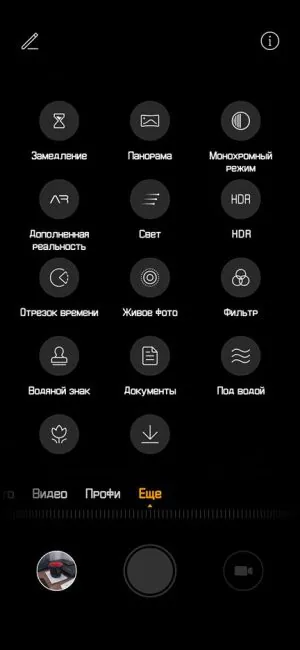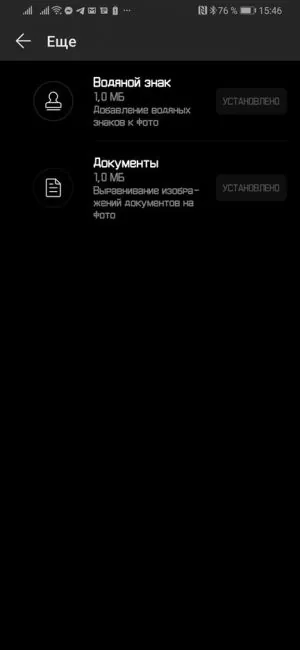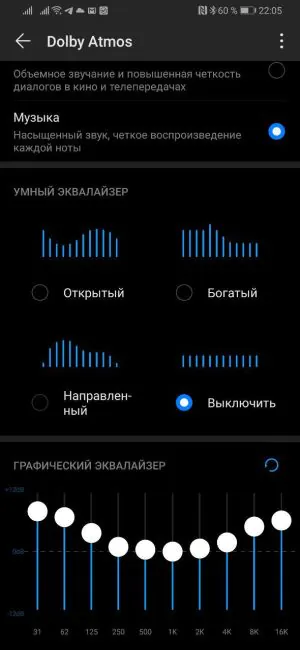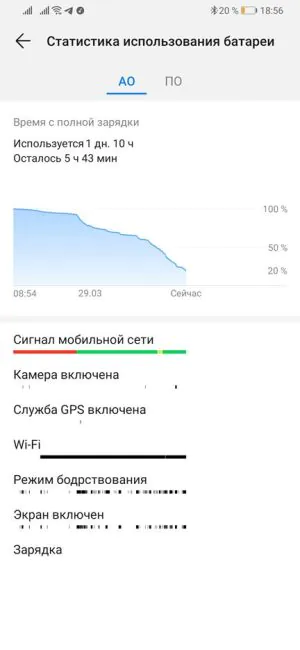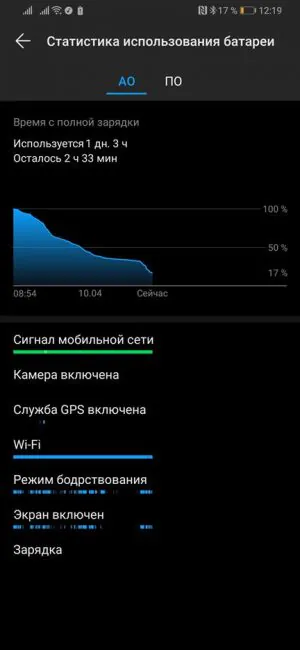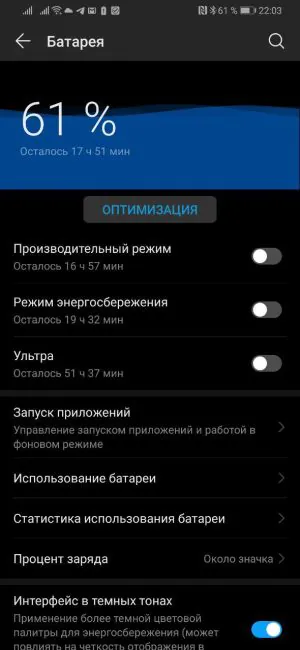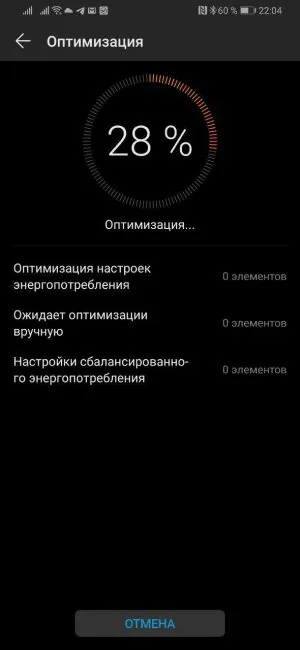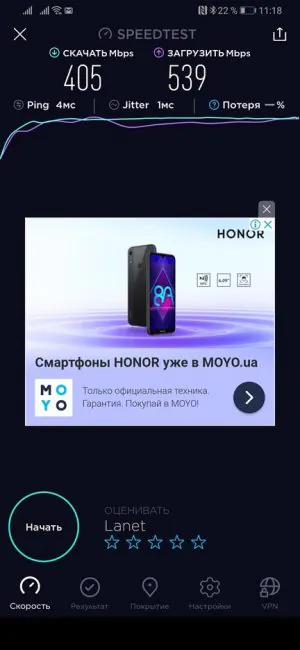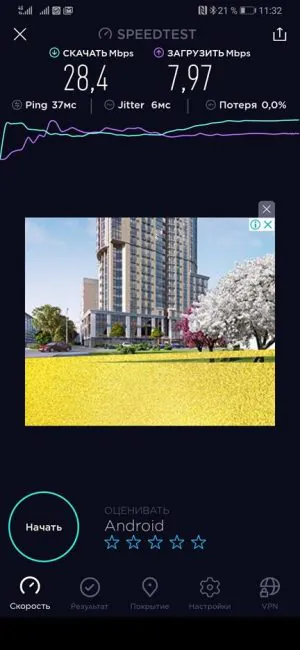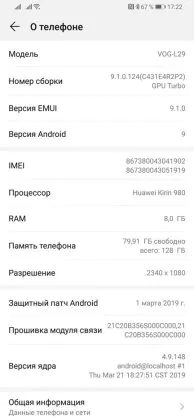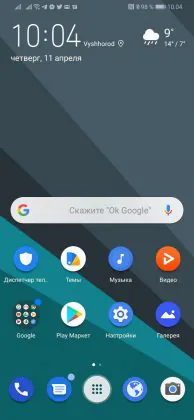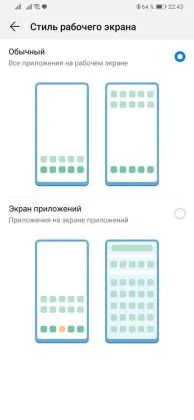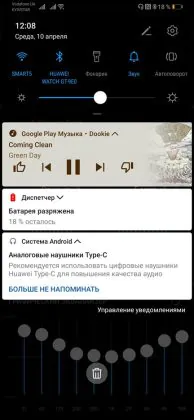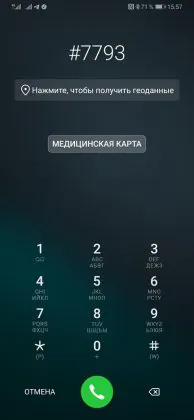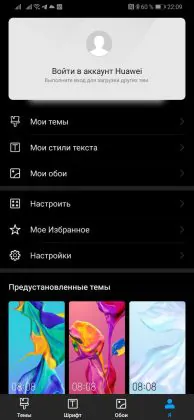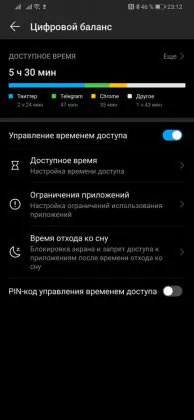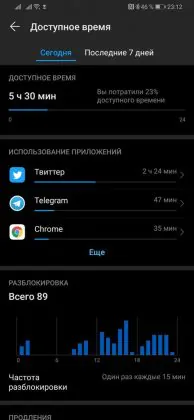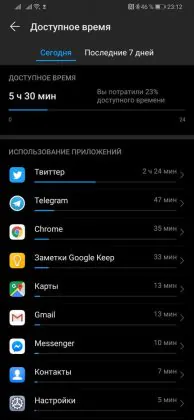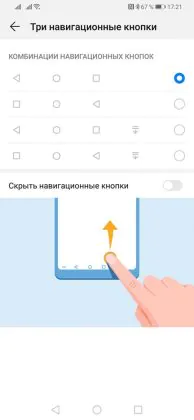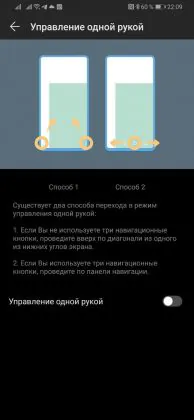© ROOT-NATION.com - Use of content is permitted with a backlink.
Huawei P30 Pro is a landmark device for me. For the first time in our portal’s history I was invited to an official smartphone presentation in Paris. That allowed me to be one of the first people in the world to take the new flagship for a spin. I already posted my first impressions and I suggest you read it for continuity. But I had to use the device for some time before I share with you my final thoughts. Finally, it is out. Behold!
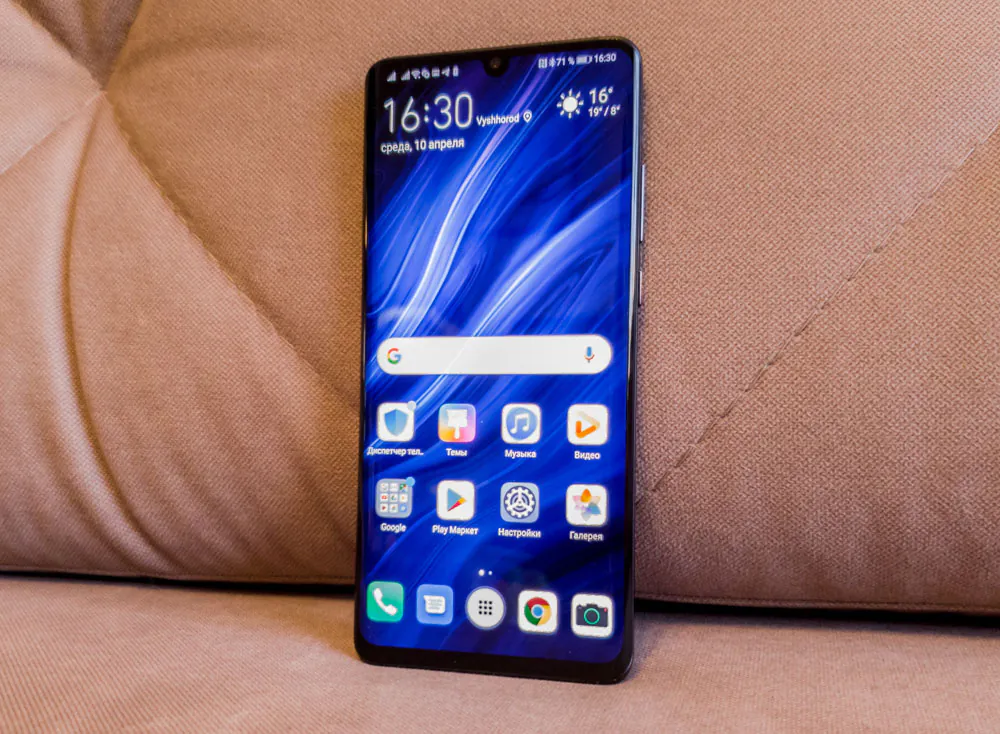
Disclaimer: Huawei P30 Pro is not the only new smartphone I have on hands. I have the last year’s Huawei P20 Pro (read about it) as well as Samsung Galaxy S10 (review here) and S10+. So I can and will make comparisons. But that makes reviewing it even more interesting, doesn’t it?
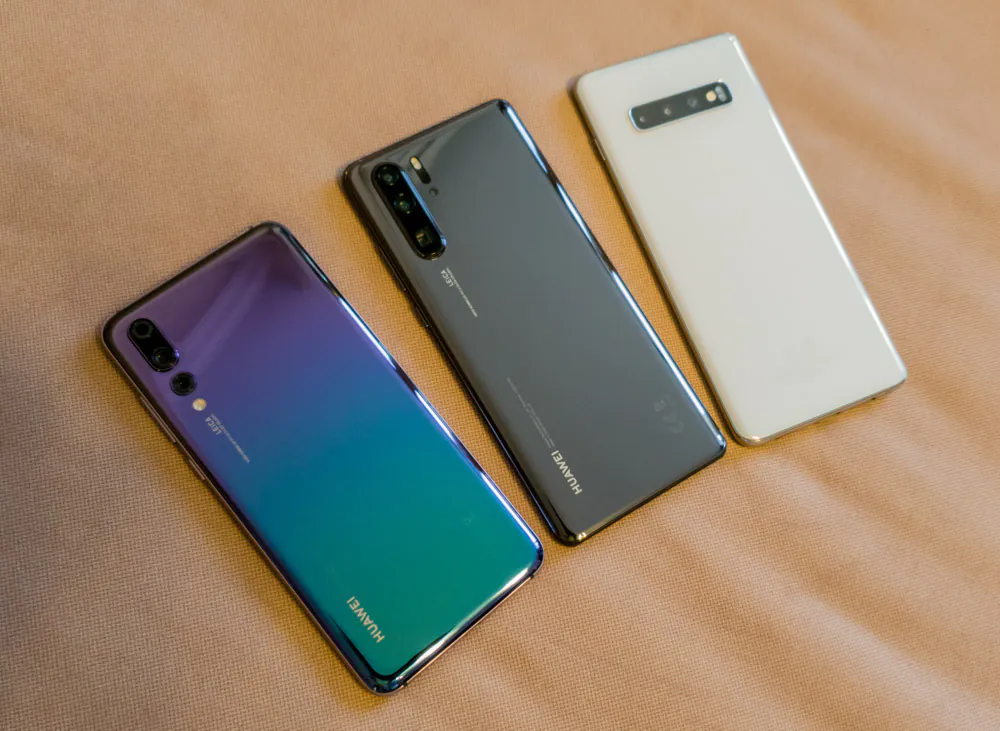
Positioning and price
Over the past few years, Huawei has managed to win the status of a leading manufacturer of smartphones. No one doubts that the company is one of the technological leaders in the mobile market. And it’s not only about devices sold. The company now confidently sets the trends in the industry. Although at the same time, with a characteristic Chinese ingenuity, it is not at all embarrassed to copy the most successful competitors’ ideas. This is probably the company’s secret to success.
The most important thing is not that Huawei leadership is recognized by profile experts and journalists. Another thing is important: I personally witnessed the transformation in the minds of customers for the last few years, when from a brand with a ridiculous (for Russian speakers) name, Huawei transformed into a name that inspires confidence.

Huawei presentations also arouse the most lively interest of both specialists and ordinary users. At the moment, these are no less significant events than the Apple presentations or Samsung Unpacked.
So what do I want to say exactly? Nowadays the new flagships of the Chinese manufacturer are estimated at the level of the top smartphones of other famous brands. And Huawei P30 Pro is no exception. The price of it (about $1,000) is usual by today’s standards. Whether the smartphone is worth this money, we will find out in the testing process.
Also, traditionally, in the P line, there is also a junior Huawei P30 model – a more compact in size and with slightly trimmed cameras. The smartphone is also cheaper – about $850.
What’s in the box
The P30 Pro package includes: there is a phone in the box, a 40 W charger, a USB-A/Type-C cable, a Type-C proprietary headset, SIM-card eject tool, papers and manuals. There’s no transparent case and a USB-C to 3.5 mm adapter. But the box contents can be different in other markets.
Design, materials, build quality
For the third consecutive year, appearance of a Huawei flagship is hardly original. It seems that we have already seen all the components of the design in some other smartphones – both in Huawei and in competitors.
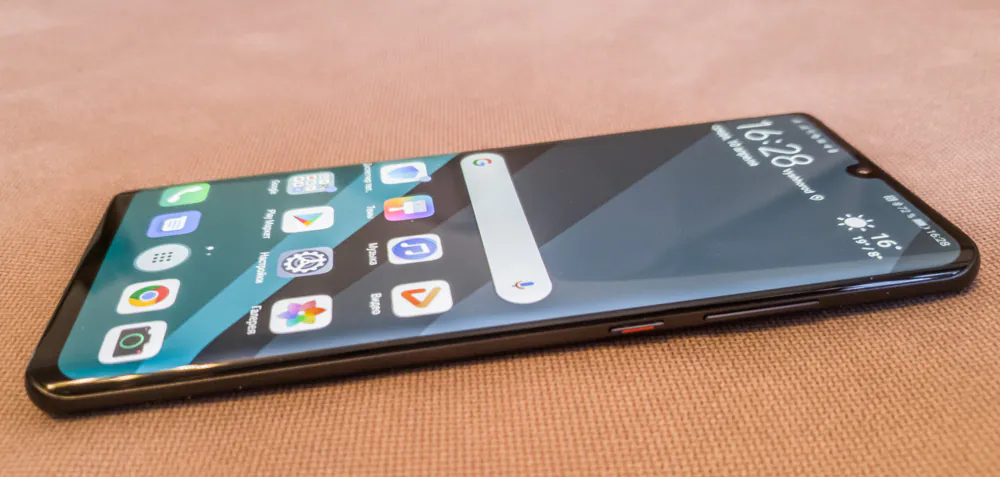
But at the same time, I think the design of the smartphone is optimal. As if someone had collected all the current trends in one device. I am sure that real buyers will be able to appreciate it for what it is.
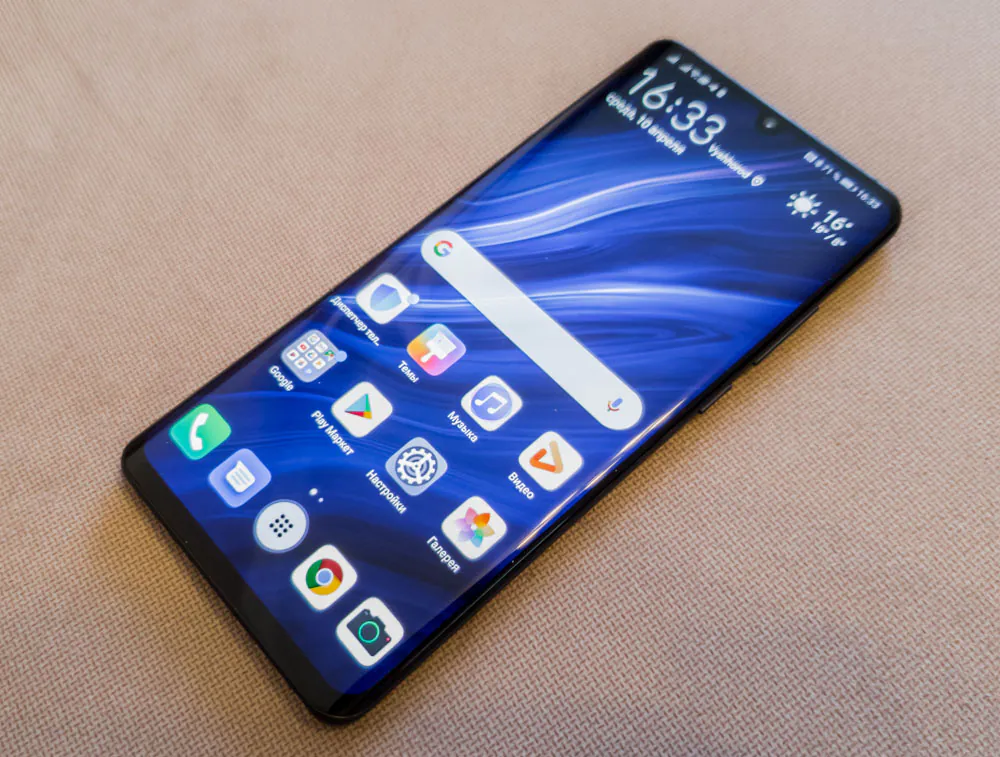
Huawei P30 Pro materials are of premium quality; glass in front and on the back, a sturdy metal frame around the perimeter. The screen is carved at the edges of the screen with a small teardrop-shaped notch, flat ends on the top and bottom and rounded left and right. The glass in the back is symmetrically folded – just like the display glass. It is worth noting that the body of the smartphone is protected from dust and moisture according to the IP68 standard, which is already the industry standard for all flagships.
There’s characteristic element behind, which was first used by “you know whom”, and has since been used way too often in smartphones from many manufacturers. I an talking about a vertical block with cameras in the upper right corner. This element in Huawei P30 Pro is unusually high. Perfectionist beware: the 3 cameras there are not evenly spaced, and the window of the last lower chamber is square.
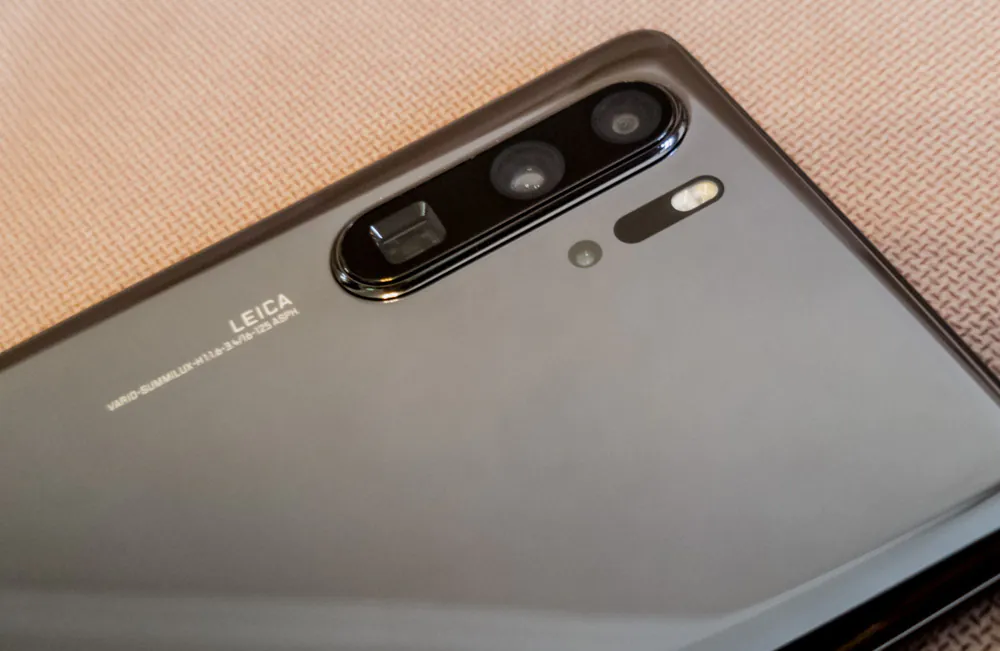
But, when we get to the discussion of the cameras, you will understand that it was simply impossible to do it otherwise. And in general, Huawei engineers worked conscientiously on this smartphone to pack all the elements in a fairly compact case.
The main feature of the smartphone design is the unique colors of the back. They are very original, with complex color transitions. There’s Aurora (blue with transition to blue and emerald), Amber Sunrise (amber, close to orange), Breathing Crystal (sky blue and lilac), Black (classic black – like on my test), Pearl White (white with pearl shimmer).
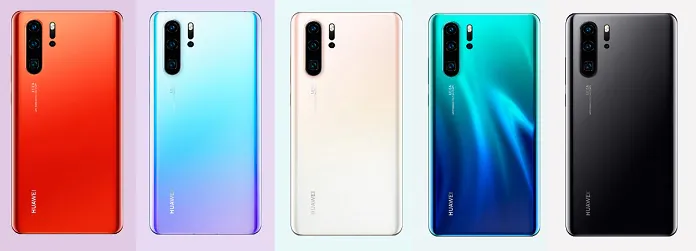
As I have already noted, I have on my hands the “boring” black version of a smartphone. But I like its understated classiness. It turned out that it is not just black and not so simple as it may seem at first glance. The case changes shade under different angles of illumination, becomes dark gray with a titanium shimmer. The frame in my case has a matte finish. And it is not as slippery as phones made with polished metal.
Although Huawei P30 Pro does not seem thin, you can’t call it thick at the same time. And the front and rear panels curved around the edges slightly reduce the thickness visually. In general, the proportions and dimensions of the gadget seem optimal to me. You might even call P30 Pro beautiful. But, of course, one can always disagree. And yes, the build quality is perfect and that’s about it.

As for my express comparison with the predecessor and the main competitor, Huawei P30 Pro has clearly become more attractive than P20 Pro and looks more modern. The screen is bigger, the notch is smaller, the archaic area of the scanner is gone, the cameras behind are finally united by a common unit.
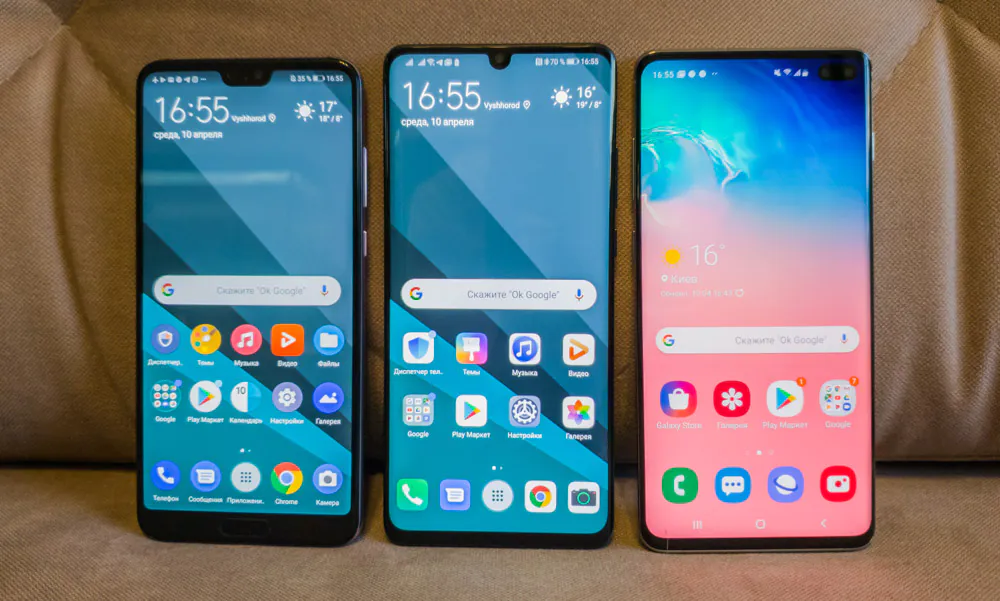
But Galaxy S10+ is slightly better than P30 Pro in terms of design. It is a bit more compact, thinner and looks more refined. The hole in the screen is the original “sexy” solution, as opposed to a teardrop notch. Agree, it is often impossible to understand what kind of smartphone in front of you, since such notches are used even in budget (and Huawei as well). Unlike our current device, Samsung’s flagships are certainly recognizable, both in front and behind. It even has more interesting color solutions. But this is my personal opinion, of course.
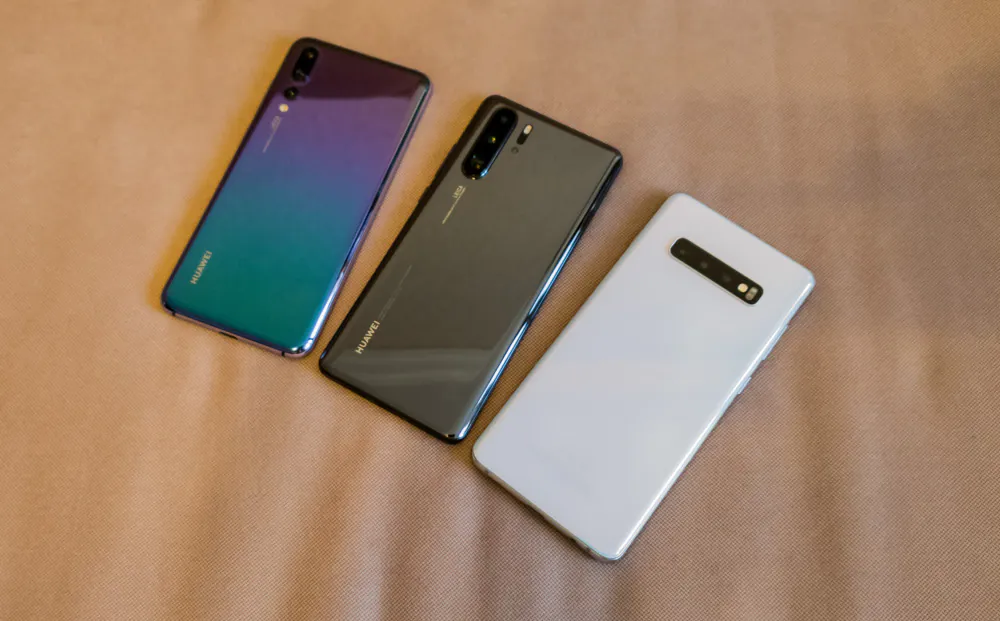
Element’s configuration
In front is a large screen, slightly curved at the edges to the right and left, with a drop-shaped notch at the top, in which only the front-facing camera is visible. For some time I could not find where the light and proximity sensors were located, but then I did find them in a small frame at the top – to the right of the camera.
There is no earpiece speakers in Huawei P30 Pro. The new acoustic display technology is used in its stead. It works like that: the driver is located under the screen and the protective glass plays the role of the speaker. We’ll talk later about the sound quality. The LED indicator is also missing, which is too bad.
The bottom area is almost 2 times larger than the top. The bezels on the right and left are really small, and seem even smaller due to the curved screen. But, for example, in Galaxy S10+, which is a direct competitor to Huawei P30 Pro, the bezels around the screen are even thinner, especially at the bottom.
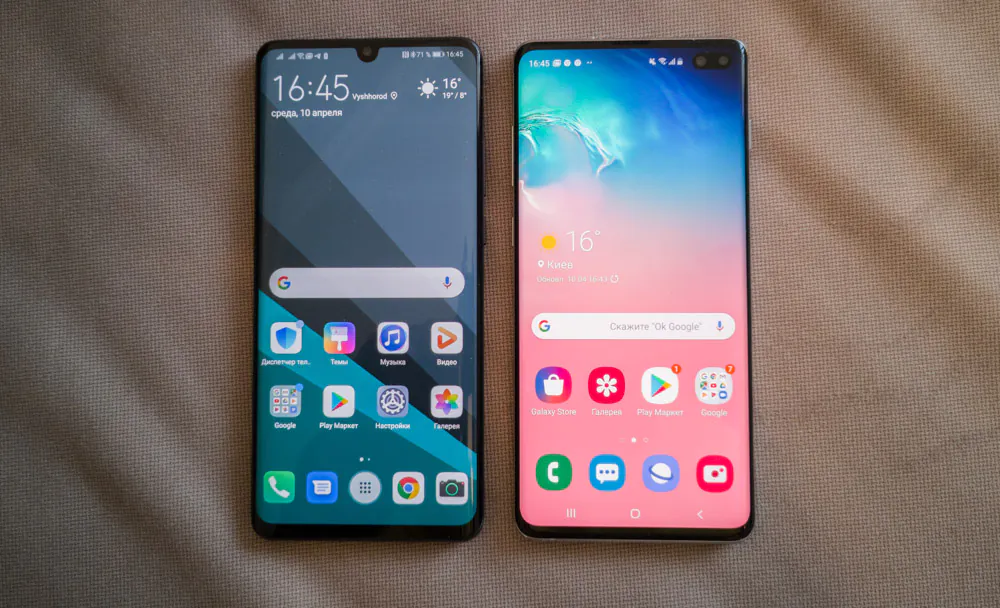
The location of the elements on the sides is typical for Huawei smartphones. On the right is the power button and volume key. But the left side is empty. Slot for sim cards has been moved down. Now it is double sided. Instead of the second nano-SIM you can install a memory card of the new Nano Memory format up to 256 GB. There is also a microphone at the bottom, a USB-C port and 5 holes, behind which the main speaker is located. Above is the second microphone and an infrared port for controlling home appliances.
Behind is a tall vertical unit with three cameras, to the right is a smaller cutout with a double LED flash, below is a laser focusing unit and a small lonely TOF camera window. We also have a vertical Huawei logo, which becomes horizontal when we turn the smartphone into landscape orientation during the classic photo or video shooting, as well as 2 text blocks with camera characteristics and other information.
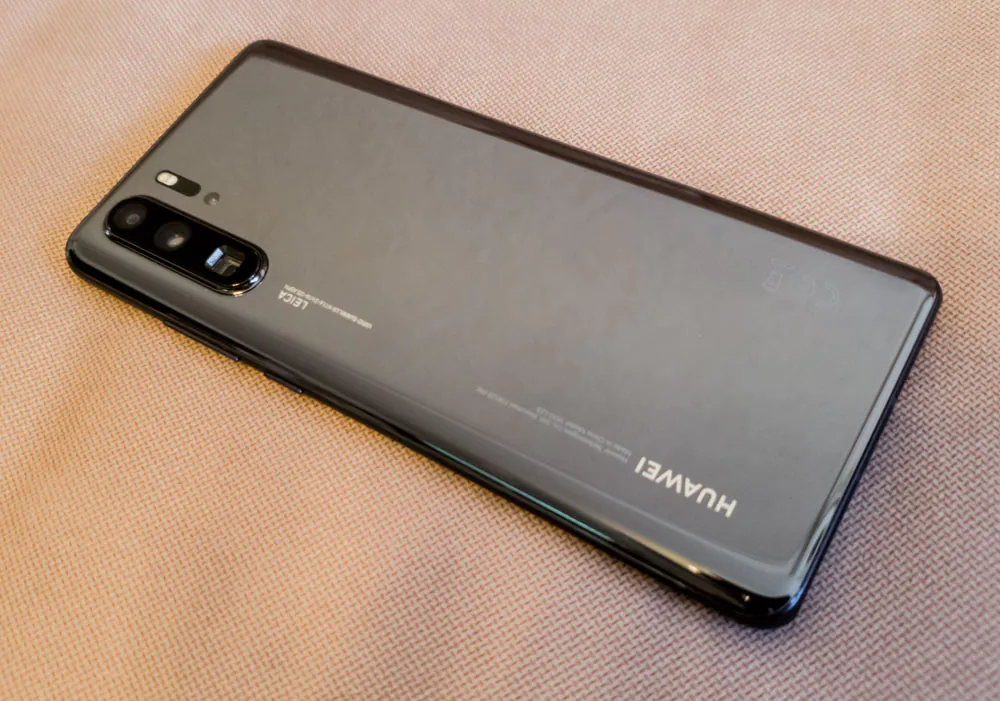
Ergonomics
Here everything is usual as for Huawei smartphones in general and for large flagships in particular. That is, ease of use largely depends on the size of your palm and the length of your fingers. Using a smartphone with one hand is possible, but difficult. If you are the owner of P20 Pro, almost nothing will change with the transition to a new generation, despite the fact that the new product is a little longer.
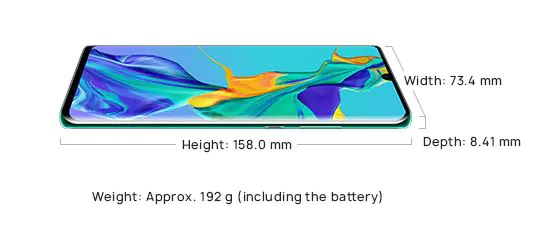
The shape of the smartphone is convenient ergonomically because of the rounded edges and curved edges of the glass behind. The buttons are located in the right places, although they are a bit thin. In this regard, the P30 Pro is more convenient than S10+. And this is not only my opinion, I always try to check these moments with as many friends and acquaintances as possible. Almost all say that Huawei is better in the hand and the buttons are more convenient than Samsung.
The device is quite slippery, the use of a protective cover is recommended. There are lots of them, both first-party and third-party. For example, I bought this one even before the start of official sales:
Oleophobic coating on the screen is available and it is excellent. The back is different. Glass actively collects prints and fine dust around the camera. Here, of course, it is worth noting that dirt is less noticeable on cases of light shades than on black. But again, given the large glass area of P30 Pro, the smartphone will most likely be placed in the case right after the purchase it and nothing will be visible – neither beauty nor defects.
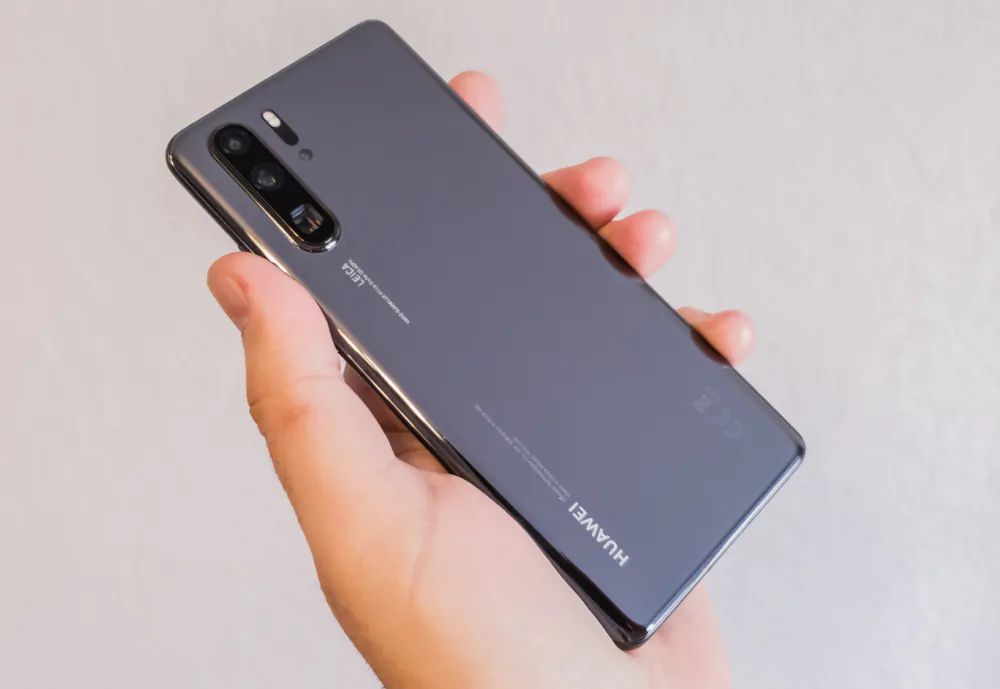
Screen
Huawei P30 Pro has an OLED matrix of a new generation with 6.47″ diagonal, which occupies approximately 88.6% of the frontal part of the smartphone. The display resolution is 1080×2340 pixels, the aspect ratio is 19.5:9, the pixel density is about 398 ppi. There is support for a wide dynamic range of HDR10 and DCI-P3 – an extended color profile that is used in digital cinemas. In general, the specs are great, but let’s see how the screen behaves in real operation.
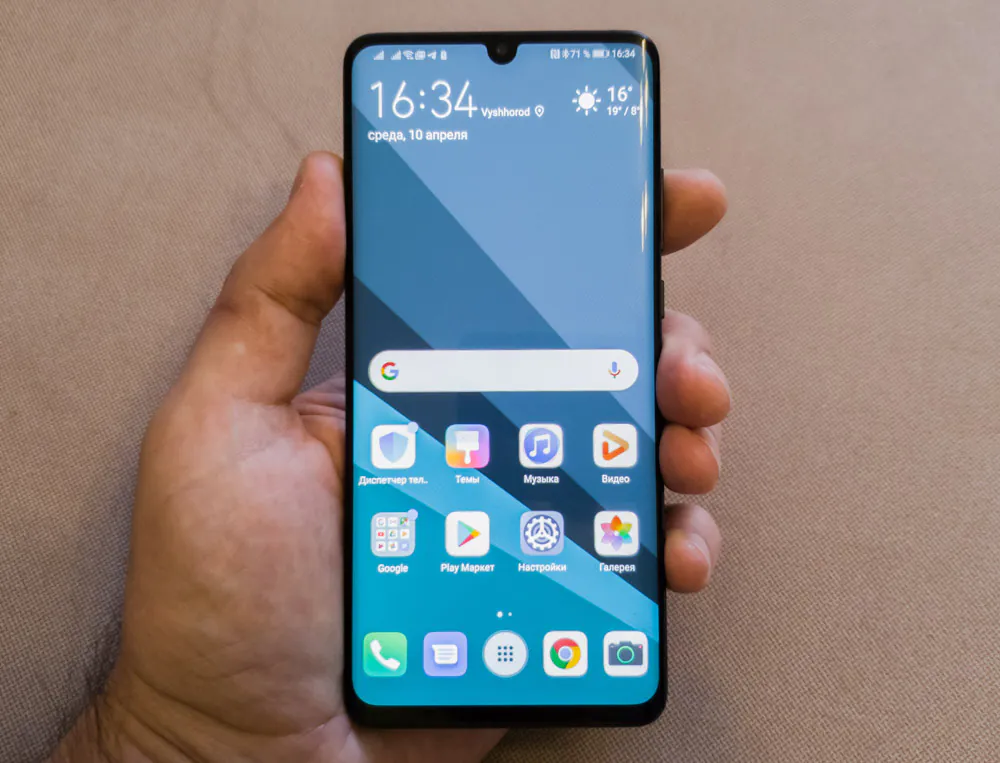
For me personally, this is a very difficult section. Because the P20 Pro display is better for me. I even tried to find out who is the supplier of the matrix, and most likely it is BOE. A very unusual OLED, which feels very similar to IPS. It has excellent white color and good viewing angles without distortion.

In the case of P30 Pro, I feel like a déjà vu and I am holding a Samsung smartphone. Under different angles the screen begins to go into a light blue-green or greenish-blue. The effect is enhanced by the fact that the edges of the screen are also curved. And by the way, this happened for the first time in the P line. Previously, this solution was applied only in Mate series smartphones. Also, when recording a video of the screen, a high level of PWM is noticeable, but this is generally characteristic of all OLED matrices. Galaxy S10+ has it, as well as P20 Pro.
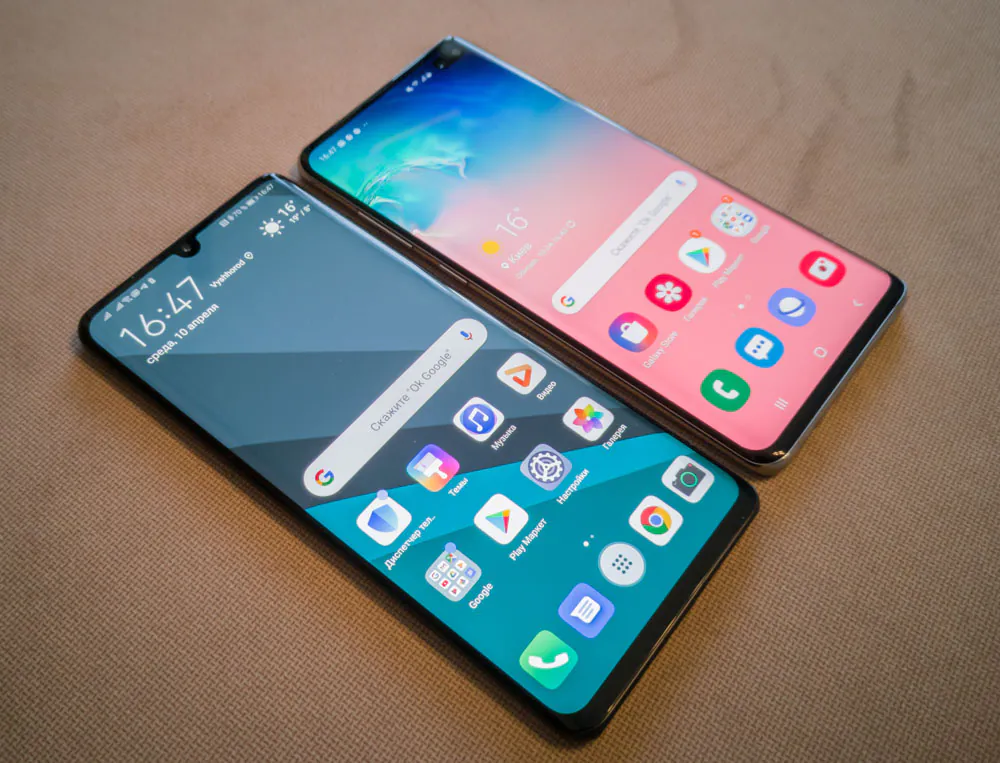
The display also has noticeable improvements. Because the black in P20 Pro looked rather deep dark gray. In the newest version it’s bottomless black. Contrast is also improved. As is the color gamut. And if you do not tilt the screen with a white background, but simply use the device, or even better – use the interface in trendy dark tones, then the screen, of course, feels amazing. And its brightness is higher compared to last year’s model. Therefore, on the street, it behaves just fine. The minimum brightness is also low and comfortable to read from the smartphone screen in the dark.
In general, it is better not to listen to me. Last year, when the P20 series was released, I also suffered the ultra-clear QHD P10 Plus screen. With time, I’ll get used to it.
As for direct comparison with a competitor, it is worth noting that the display in S10+ is more dense and clear if you turn on higher resolution in the settings (the default is FH+). But at the same time, Huawei P30 Pro has a higher maximum brightness and less white distortion when it is deflected. In normal operation, the screens are almost equivalent, as for me.
EMUI settings traditionally have 2 color profiles – “normal” – more natural and “bright colors” – with enhanced contrast. In the second case, you can fine tune the color temperature. And of course there is an eye protection mode for night reading with a blue filter and temperature setting, which can be activated manually or according to a schedule.
You can also adjust the screen resolution and switch between FHD+ 2340×1080 high resolution and lower 1560×720 HD+. Or let the system to decide the optimal resolution.
If we are talking about the screen, it is worth noting that the curved faces in the P30 Pro are not programmed in any way, there are no app panel or notifications, as in Samsung flagships. Here it’s only for the design effect, which gives an additional charm to the front of the smartphone.
Performance
Huawei P30 Pro is equipped with eight-core SoC HUAWEI Kirin 980, which contains 2 core Cortex-A76 2.6 GHz, 2 core Cortex-A76 1.92 GHz and 4 economical 1.8 GHz Cortex-A55 for undemanding tasks. The processor is manufactured using the latest 7-nanometer technology and works in tandem with Mali-G76 MP10 video core. This solution is familiar to us from Mate 20 Pro. Another innovation of the chip is Dual NPU (Neural-Network Processing Unit) for artificial intelligence, increased by 2 times.
As for memory, we have 2 basic options for RAM: 6 GB of RAM paired with 128 GB of storage or 8 GB of RAM along with 128/256/512 GB of storage. There are 4 modifications of the smartphone. I have 8/128 GB.
Now into the actual operating experience. At first glance, I did not see any improvements compared to last year’s model, which actually is pretty quick. But still, over time, you begin to notice, especially with direct comparison, that the animations have become smoother, scrolling in the Twitter feed has gotten rid of even minor lags. The launch of applications, which was already so fast (as it seemed to me), is about 2 times faster. The speed of the camera in complex algorithms also improved. In general, there are changes, but I would not call them too stunning.
I apply the results of popular benchmarks:
In games, performance also improved (theoretically). But in general, I recommend reading about it or better looking at other specialized tests, since mobile games are not at all in my area of interest – I just don’t have time for them. The 3D Mark screenshot for an overall assessment of the performance of the graphics subsystem is higher, and that’s about it from me.
Cameras
We come to the most interesting moment of Huawei P30 Pro. It has long been clear that mobile cameras have reached an excellent base level. Especially the flagship devices in good lighting conditions. Before the release of P30 Pro there was a certain parity in the quality of photos and videos of all the market leaders. Therefore, this year Huawei had a task to make a breakthrough in terms of the cameras of the new flagship and bring photos and videos to a new level, which for some time will be unattainable for competitors. And they did succeed.
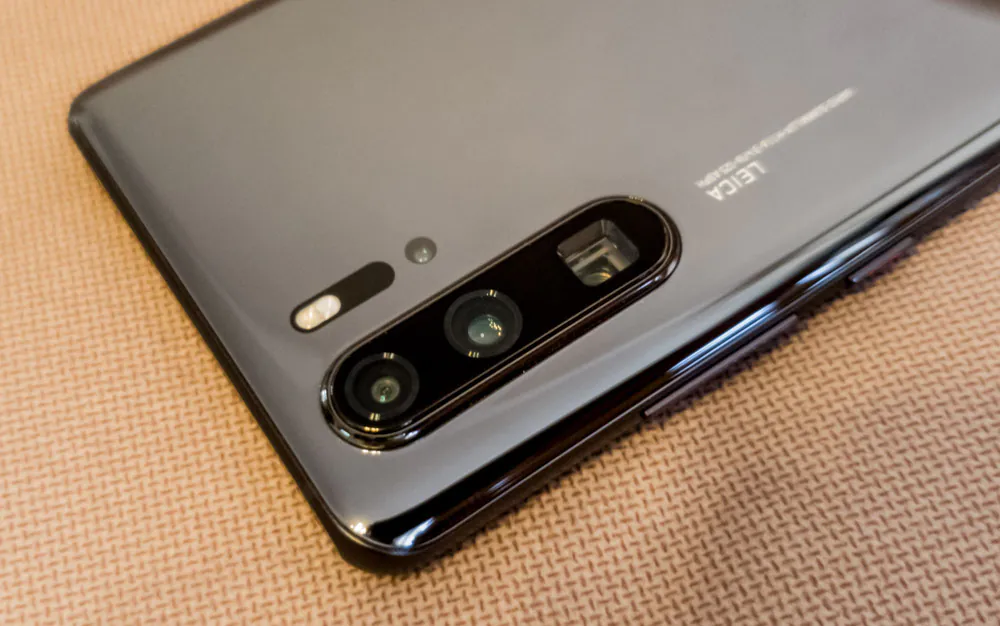
To accomplish this task, the manufacturer has focused on the use of smart phone cameras in difficult and even almost absent lighting conditions. Cooperation with Leica in the field of optics and software for camera operation was continued. New unique solutions were introduced, primarily in hardware and, of course, software and artificial intelligence, in order to provide new shooting modes and seamless switching between them.
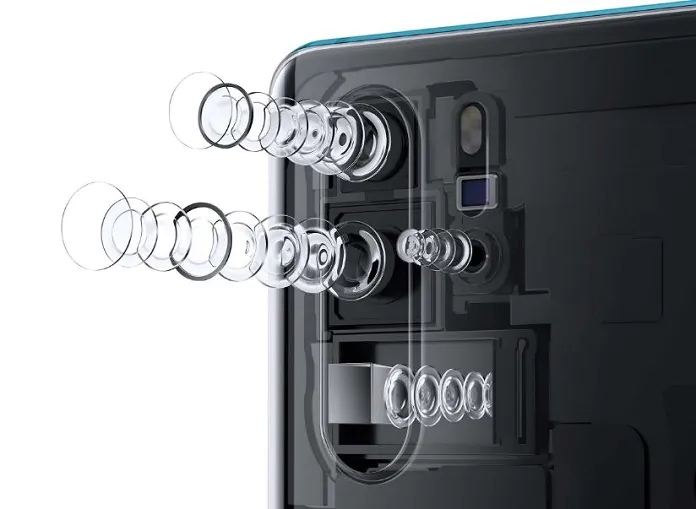
The set of cameras that are installed in the Huawei P30 Pro certainly impresses with its features and capabilities. We have:
The main wide-angle module (focal length 27 mm) with a resolution of 40 MP, f/1.6 aperture, 1/1.7 matrix size with support for phase focusing and an optical stabilization system.
Auxiliary ultra-wide module (16 mm), 20 megapixel, f/2.2, 1/2.7″ matrix, and PDAF support.
The unique periscope is the telephoto module (125 mm) 8 Mp, f/3.4, 1/4″ matrix, which provides 5x optical zoom and has optical stabilization and phase autofocus. From the illustration below it becomes clear why this element is square, rather than round, because a special optical prism is used here that changes the direction of the light rays by 90 degrees to ensure maximum focal length. And this unique solution is used for the first time on the smartphone market.
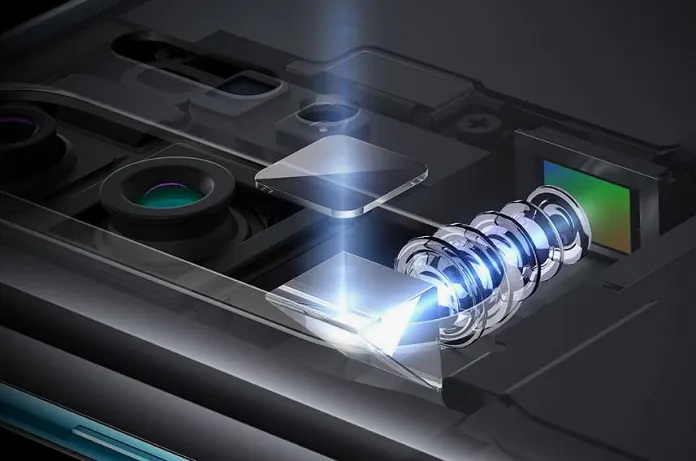
The most unusual element in the set is the TOF 3D camera (Time of Flight), which allows you to scan real objects, turning them into three-dimensional models, measure the sizes of objects and determine their position in space. In addition to the banal help in creating beautiful bokeh, the capabilities of this camera are used in augmented reality technology projects. For example, in specialized design programs, as well as for gaming use – it allows you to track the position of the player in space.
In general, all these extra-functions require a separate study and, possibly, a separate review. It is likely that I will do this a little later, as it is painfully interesting and unusual this topic.
The real results are certainly impressive. Again, in good conditions without zoom the results show parity with competitors, like Galaxy S10 (+). And even compared to last year’s P20 Pro, you will not notice a significant breakthrough. It all depends more on user’s skills, scene selection, focus point and how automation and AI work in a particular situation.
When you start approaching distant objects or the lighting becomes critically low, that’s when Huawei P30 Pro begins to dominate all other smartphones. I already gave it the title of “King of the Night” when I talked about my first impressions.
And of course, or also gets the title the “Lord of Zoom” easily from me. That’s because one of the killer features of the new flagship Huawei is a 50x zoom. At the same time, it is 5x optical, 10x hybrid and then it goes digital. The results are just fantastic. No other smartphone is capable of this.
10,000 meters above ground. With Huawei P30 Pro you can do aerial photography!
SEE PHOTOS AND VIDEO EXAMPLES IN FULL RESOLUTION
SEE PHOTOS AND VIDEO EXAMPLES IN FULL RESOLUTION
As for video, there are currently no critical improvements over last year’s flagship. It’s all perfect, of course, and stabilization in 4K is very good indeed. 2160p @ 30fps, 1080p @ 60fps, 1080p @ 30fps with gyroscopic stabilization and slow motion at 720p @ 960fps are currently available in the camera software.
As for the selfie camera … I’m not a big fan of selfies in general, since I am a big and scary guy with a beard. But in general, everything is great. Although there’s only one camera, it is a 32-megapixel, with f/2.0 aperture, wide angle and HDR support. A few examples are attached in the gallery. The camera also knows how to shoot video in Full HD 30 fps.
A little about the camera software. This is the standard software from Huawei, which has not undergone large changes compared to other smartphones. There are photo and video modes with the ability to quickly switch to a wide angle, 5x and 10x zoom. AI can also be turned on or off while shooting. In general, I recommend it to leave it turned on, since it determines many scenes correctly and automatically activates the macro mode or night mode. But if something goes wrong, you can simply turn off intelligent scene – click on the cross near the scene name and refuse the AI proposal.
Also in the camera software there are specialized modes:
Aperture – here you can apply the effects of an open aperture on the go and then change the focus point and background blur effect in the gallery.
Night – makes night photos look like they were made in the day. Therefore, use this mode if you want to see more details in the dark. You can also change the shutter speed and ISO on the go. If you want to get an atmospheric photo better shoot in standard or professional mode. Examples of differences between automatic and night mode:
Portrait – everything is clear. Defines the face, separates the background, enforces a beautifier and effects.
Professional – the ability to manually adjust the shooting settings and save photos in RAW format.
There are lots of other things. Macro, panoramas, live photos, document scanning, various filters, augmented reality with 3D Qmoji and all sorts of things.
In general, the Huawei P30 Pro camera has not yet been fully understood. The manufacturer promises that after the first major firmware upgrade the quality of photos and videos will improve, and in addition the new unique Dual-View Video modes will be available (shooting in parallel with several cameras with different perspectives), professional bokeh using all the capabilities of AI, taking pictures of water and stuff. Let’s wait and see!
Sound
With the release of Huawei P30 Pro, the manufacturer finally realized that this is the second generation of the flagship without a 3.5 mm wired audio connector and finally implemented Dolby Atmos support for bluetooth devices. Before that, FreeBuds headset sounded better with Samsung smartphones than with Huawei, because the competitor’s software for improving sound already had support for wireless headphones.
Better late than never. My headphones and speaker seemed to have find a new life with Huawei P30 Pro and this is really cool – the sound is excellent and you can apply effects and adjust the equalizer to your liking.
Despite the fact that there’s no USB-C to 3.5 mm adapter in the box, wired headphones can be connected. Directly to the USB-C connector (digital from the kit or third-party), or after purchasing the necessary adapter for classic analog headphones. The quality of music playback is excellent. The audio chip of the smartphone has not changed since last year, and it supports 32-bit/384kHz sampling parameters – as does Huawei P20 Pro.
There is no earpiece speaker. It is hidden under glass, which acts as a resonator. I have no complaints about the sound quality during conversation; everything is as usual at a good flagship level.
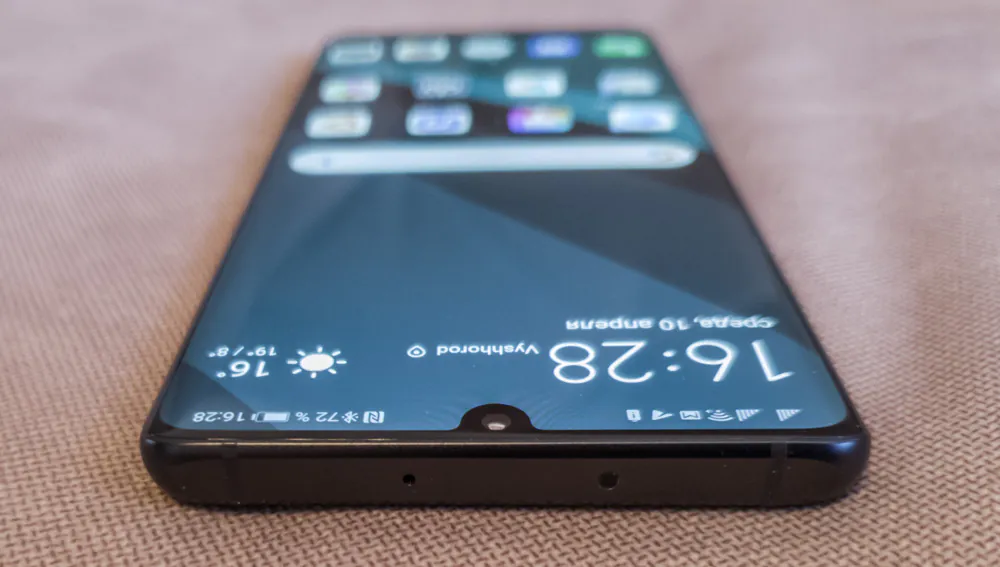
But as a result of this innovation, the smartphone has lost stereo sound. Let me remind you that in P20 Pro the role of the second external speaker was performed by an earpiece module. And this loss is annoying, as liked that feature.
Battery life
Smartphone batteries are getting more and more serious, and hardware is becoming more energy efficient. The improvements can be found in Huawei P30 Pro, which has received a battery capacity of 4200 mAh. At the same time, the chipset’s process technology has also been reduced from 10 to 7 nm. So the processor has become more energy efficient. But did I feel this improvement in practice compared to P20 Pro? Actually, no.
The thing is, the overall power consumption of the system is also growing. Because the processors and video accelerators are becoming more powerful, the screens are bigger and brighter, and the number of cameras in a smartphone starts from three, even in the budget segment. And in modern flagships have are at least 4 or 5 of them, and they often work simultaneously.
That is why we have not seen a significant shift in the battery life of gadgets for many years. The industry is simply trying to maintain the acceptable level of autonomy to which consumers have become accustomed.
However, this does not mean that nothing changes at all. The main feature of modern smartphones in terms of power is fast charging. And it is precisely in this that the Huawei P30 Pro is as strong as anybody. It supports charging power up to 40 watts. Half an hour of charging from the bundled charger gives you a light day of active use.
Charging speed testing:
- 00:00 – 10%
- 00:10 – 35%
- 00:20 – 57%
- 00:30 – 72%
- 00:40 – 89%
- 00:50 – 96%
- 00:58 – 100%
Also P30 Pro supports fast wireless charging of 15 W according to the QI standard. From my ADATA CW0100 BZU, the smartphone is gaining 5-6% in 10 minutes.
And of course, there is a trendy reverse wired and wireless charging. This is a very cool feature, when your smartphone can play the role of a power bank for another device and charge compatible accessories without a cable. The main thing is that the manufacturers of headphones and watches (and Huawei itself first of all) pull themselves together and begin to introduce wireless charging to their devices, because at the moment devices with such a module can be counted on fingers.
In general, the smartphone survives perfectly on a single battery charge. If you are a super-active user and need 9-10 hours of screen time, the smartphone should be charged in the late evening. If you use a smartphone 4-5 hours a day, then P30 Pro provides 1.5-2 days of battery life.
Scanner and unlocking
The on-screen (or subscreen) ultrasound scanner of Huawei P30 Pro has one obvious advantage – it is not visible and it does not take up space on the smartphone body. Thus, the design becomes “cleaner”, the devices gets rid of the extra element – the area of the fingerprint scanner. In general, everything is logical and I welcome this decision with all my heart.
But while this technology has drawbacks – it has not been polished to perfection yet. The on-screen scanner does not work as quickly as a traditional sensor in Huawei smartphones. Although, perhaps, it the problem is on the software side. By the way, after the first update, which arrived a few days after the presentation, the scanner has been improved.
In addition, the user is not entirely clear where exactly the finger should be applied. Huawei solved this problem in the simplest way. When the screen is turned off, the scanner zone is illuminated for a short period each time you take the smartphone in your hand. When recognized, there’s a glowing effect around the area.. Undoubtedly, the additional charge of the battery is spent on the operation of this function, but certainly less than on Always On Display, therefore this power consumption can be neglected.
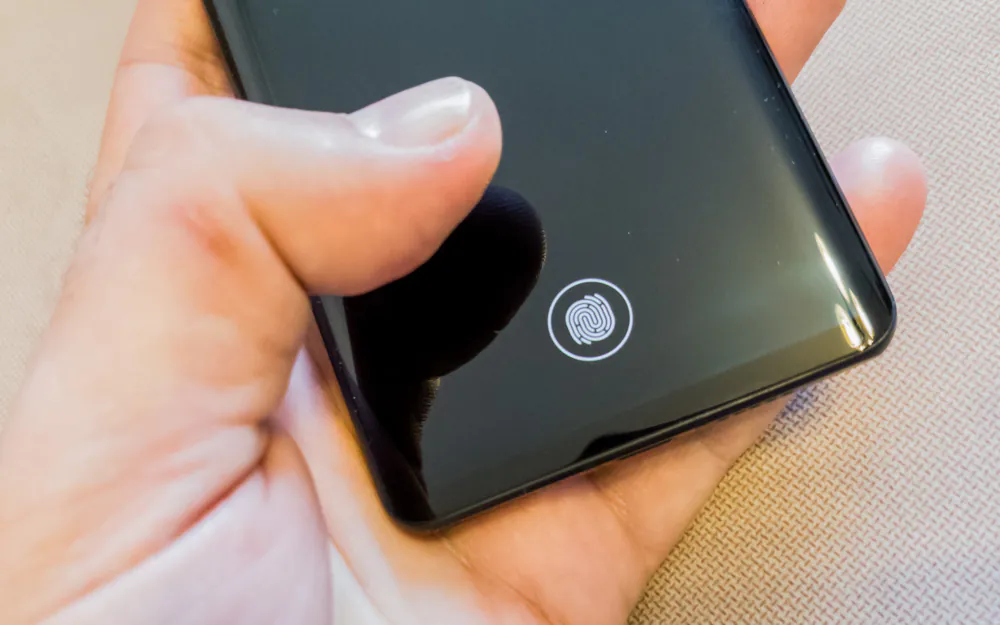
The second way to unlock the smartphone is by using face recognition. I want to note that it works with just one front-facing camera. But artificial intelligence is involved in the process. Therefore, I could not fool the smartphone with a photo or video. Other users also tried – and failed. Galaxy S10 line, by the way, is far more gullible.
In general, face recognition system in Huawei P30 Pro works well, almost perfectly and this applies to all smartphones of the manufacturer. The unlocking process is quick and the camera works at different distances; it is even not necessary to “correctly” look at the camera of the smartphone. In the dark, recognition speed naturally drops. The smartphone gradually increases the brightness of the screen to provide illumination of the face. Most often, the process ends in a success, although there are failures.
In the face unlock settings of the smartphone you can select different scenarios of the system behavior, for example, activating recognition when you pick up the device. There is also an option to skip the lock screen and you can take a smartphone, just take a look at it and immediately get to the desktop or to the latest open application. In addition, there is an activation function by double-tapping on the screen, which, for example, is convenient when using a smartphone in a car holder.
Communications
Let’s start with wireless connections. The smartphone has a Wi-Fi 802.11 a/b/g/n/ac (wave2) module, dual-channel 2.4 and 5 GHz. In real work, there are no complaints about it, with speed in the region of 400-500 Mbit/s together with my TP-Link Archer C7 router.
The mobile network also works fine, no problems were noticed. Voice communication works fine. The maximum data transfer rate in the LTE network of the operator Vodafone UA, which I managed to get, is about 28 Mbit/s. But of course, this is not the maximum of a smartphone, but a limitation of the network.
Bluetooth version 5.0 with support for BLE, SBC, AAC, aptX, aptX HD, LDAC and HWA Audio codecs also works fine, supports simultaneous connection of several headphones or headphones and speakers. I connected smartwatch to the smartphone.
As for geolocation, there is support for A-GPS and GLONASS, BDS, GALILEO, QZSS satellite systems. Everything is quick and accurate.
Also, of course, the smartphone has an NFC module for contactless payments and pairing with other devices. And there is a bonus – an infrared port to turn your phone into a universal remote control for any compatible technology.
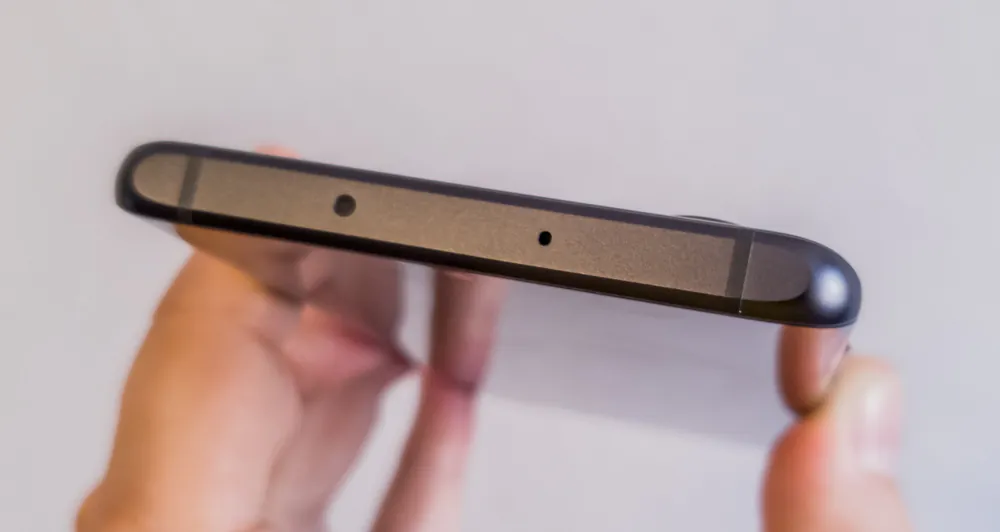
On the subject of the port for cable connection: it is implemented using a Type-C connector, USB 3.1 GEN1, but the cable that comes in the package only supports USB 2.0 and if you need the advantages of the third version of the standard, you will have to buy a special cable separately.
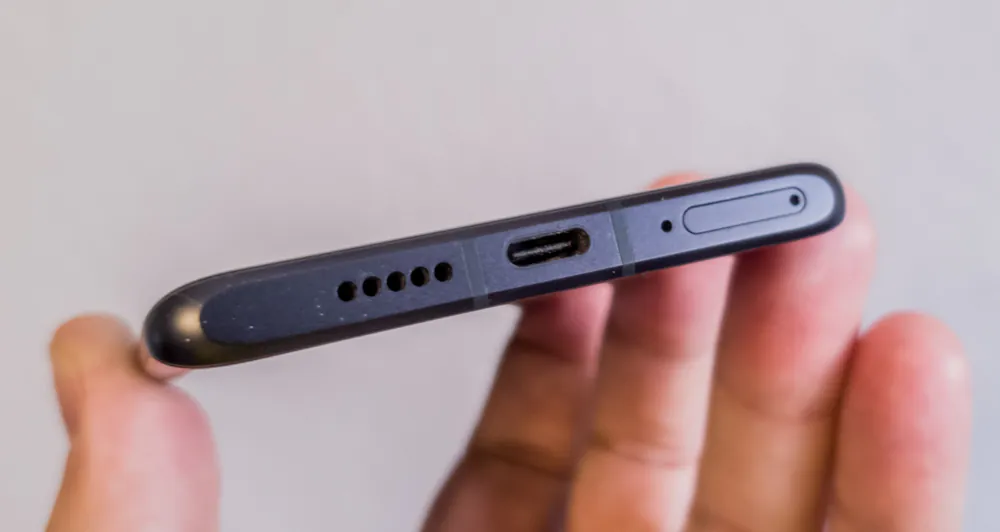
Smartphone port can be used not only for charging and data transfer. It provides reverse charging (your smartphone is used as a power bank), a headphone connection with a USB-C plug (the bundled headset is exactly like this) and video signal transmission. You can connect the smartphone to the monitor and turn it into a mini-PC with an adapted desktop interface. And the screen of the smartphone can be used as a touchpad. I even managed to test this solution at CEE 2019 using ASUS ZENSCREEN GO MB16AP monitor.
By the way, this connection is possible without using a cable. Huawei P30 Pro supports wireless screen image transfer to compatible monitors.
Firmware and software
Actually, nothing unusual in this regard. The smartphone uses familiar EMUI 9.1.0 based on Android 9. The shell is the same for all Huawei smartphones. As is a set of applications. In the context of Huawei P30 Pro I can mention only the “Virtual Remote” application to control home appliances via infrared.

On the Internet there seem to be a lot of negativity directed towards the overall design of the shell. However, I consider all such claims to be problems of habit and personal aesthetic preferences. Objectively, the shell is comfortable, functional and stable. For those who still doesn’t know: the icons can be changed to round ones! Maybe now you will understand…
The main features of EMUI:
- By default all program icons are placed on desktops. However, in the settings you can turn on the classic scheme with a separate menu for all applications. It is possible to adjust the scale of the grid of working screens and other basic options.
- There’s a support for third-party solutions that change the color scheme of the interface and embedded applications, the appearance of labels and so on. The ability to switch between light and dark interface is also here.
- Advanced tools for optimizing performance, energy saving and cleaning the system from junk, as well as security management. Management of notifications and background activity of applications.
- Support for gestures and control of the functions of the smartphone. The mode of operation with one hand and gloves. Voice control. Global system search by functions, settings and applications. Digital balance and access to time management.
- System navigation with customizable on-screen buttons or full-screen gestures from the edge of the screen.
Verdict
Huawei P30 Pro is a logical continuation of the flagship lineup. Huawei took all trendy features and put them into one top of the line device with absolutely revolutionary cameras. Rivals certainly have something to worry about and work on.
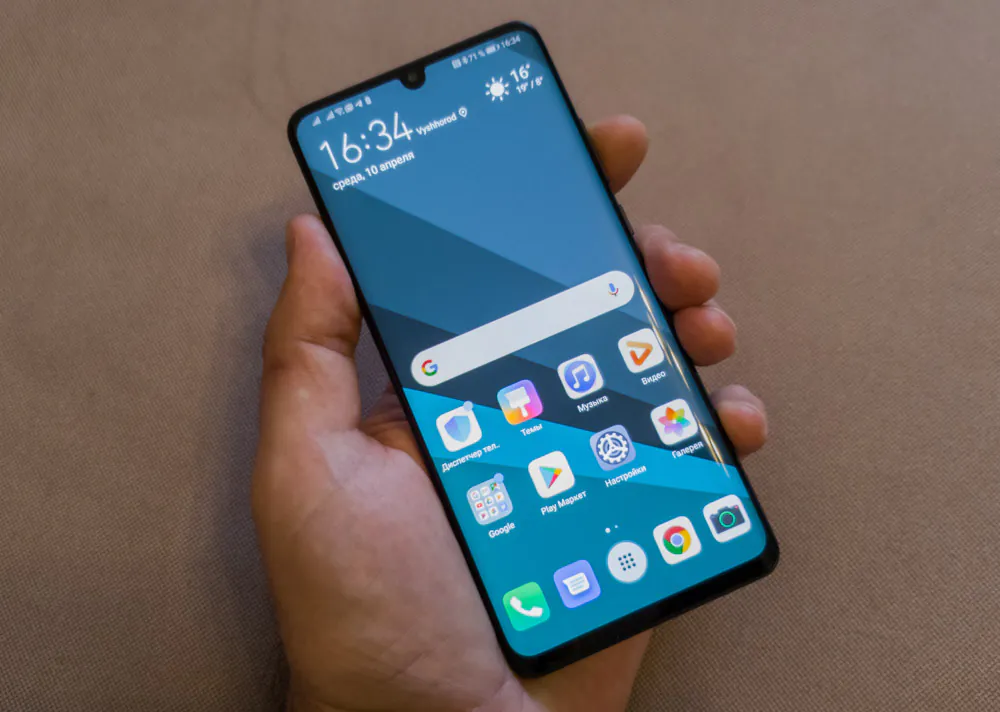
I couldn’t find any serious flaws with the device. Sure, its design is uninspired, but the phone itself is impressive, with excellent build quality. The soft is not ideal, but that’s only logical at the start. With later updates, most of the problems will be fixed.
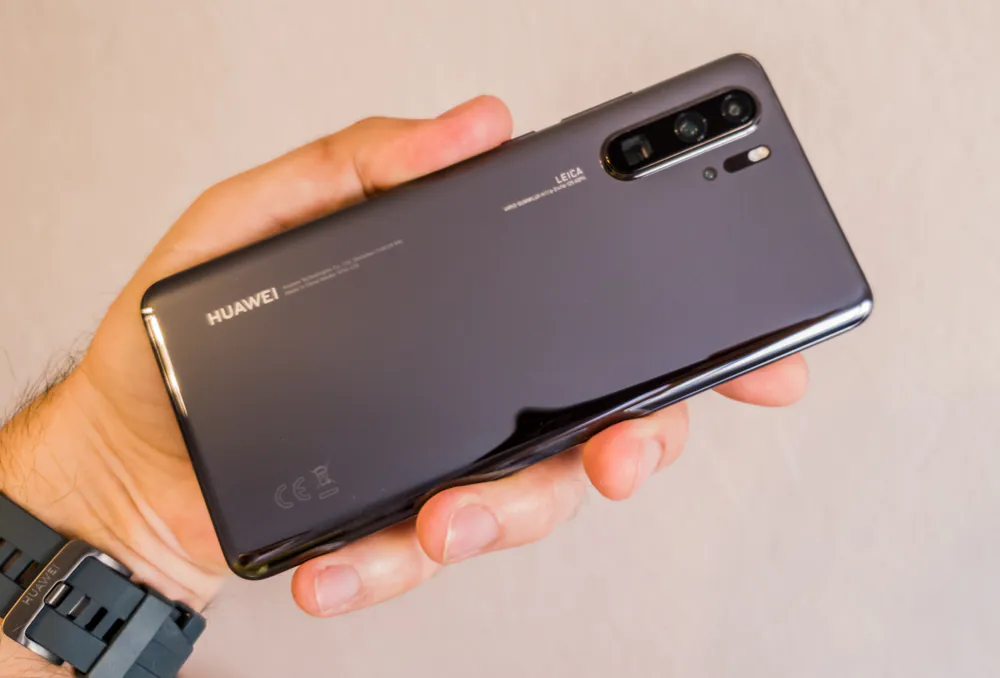
If you want a real flagship with powerful hardware and software, and especially the best cameras on the market, then Huawei P30 Pro will be a great purchase.
Subscribe to our accounts:




